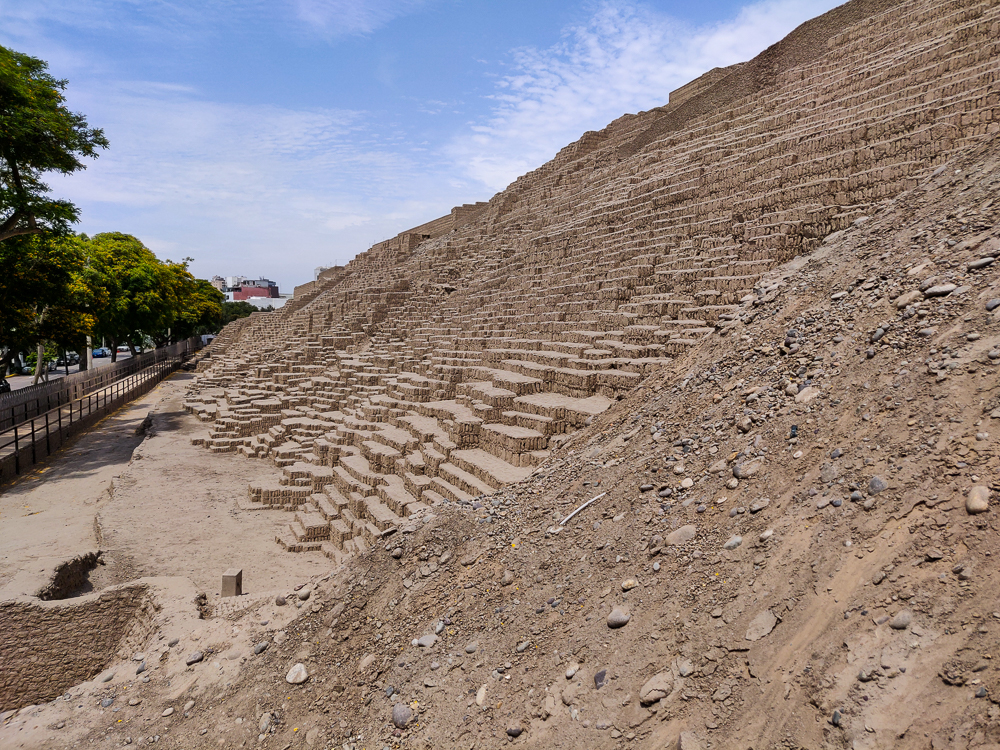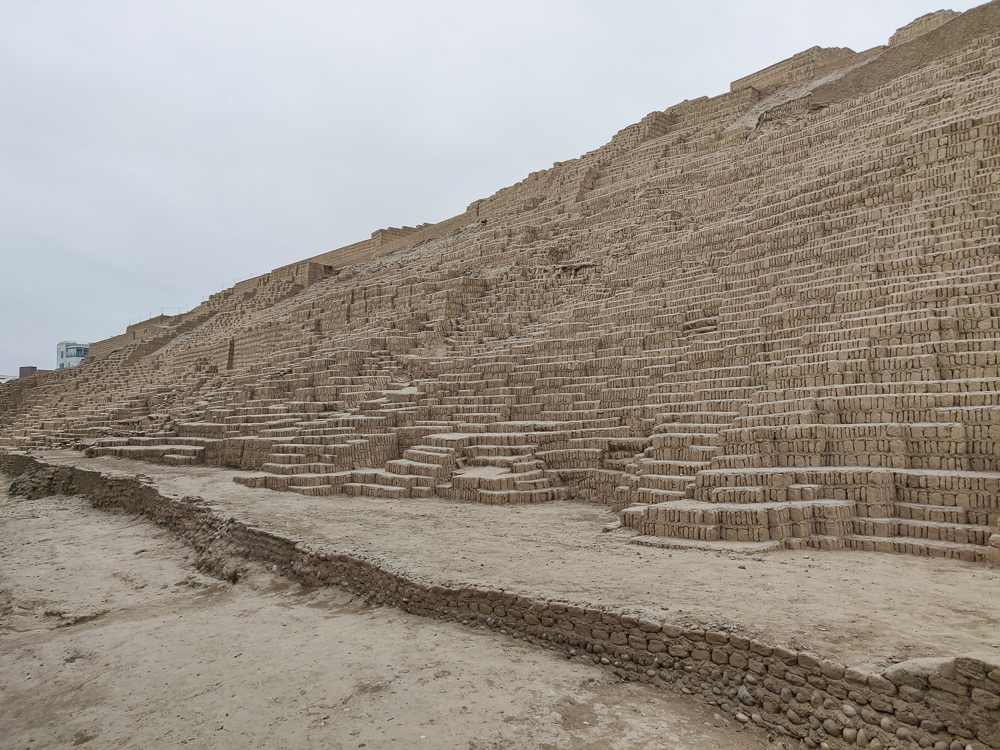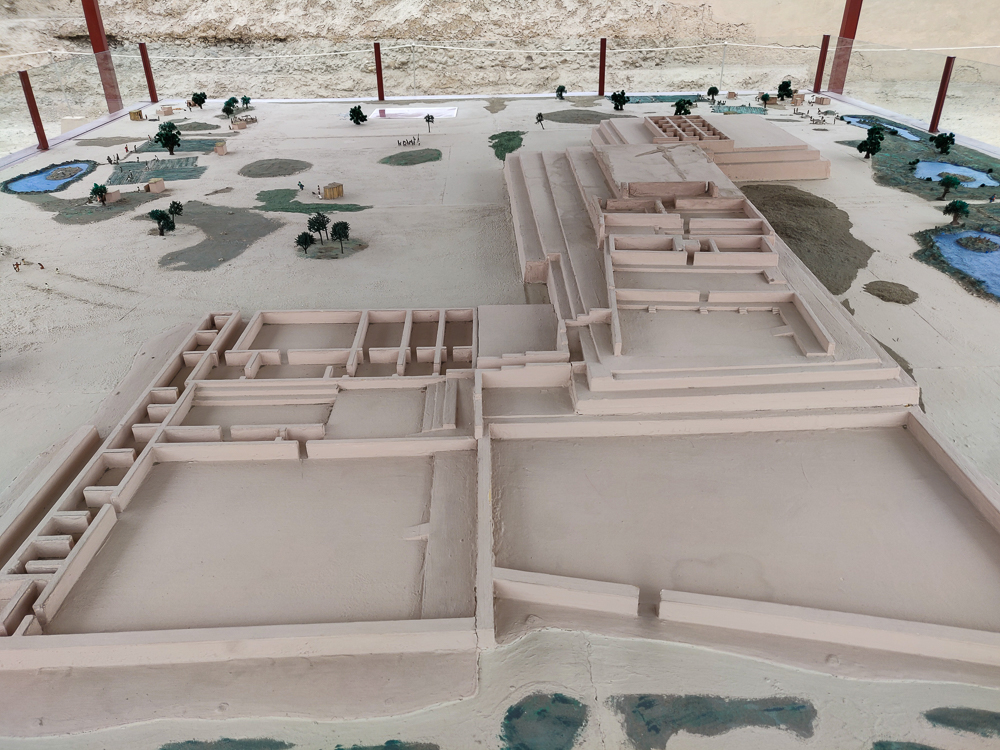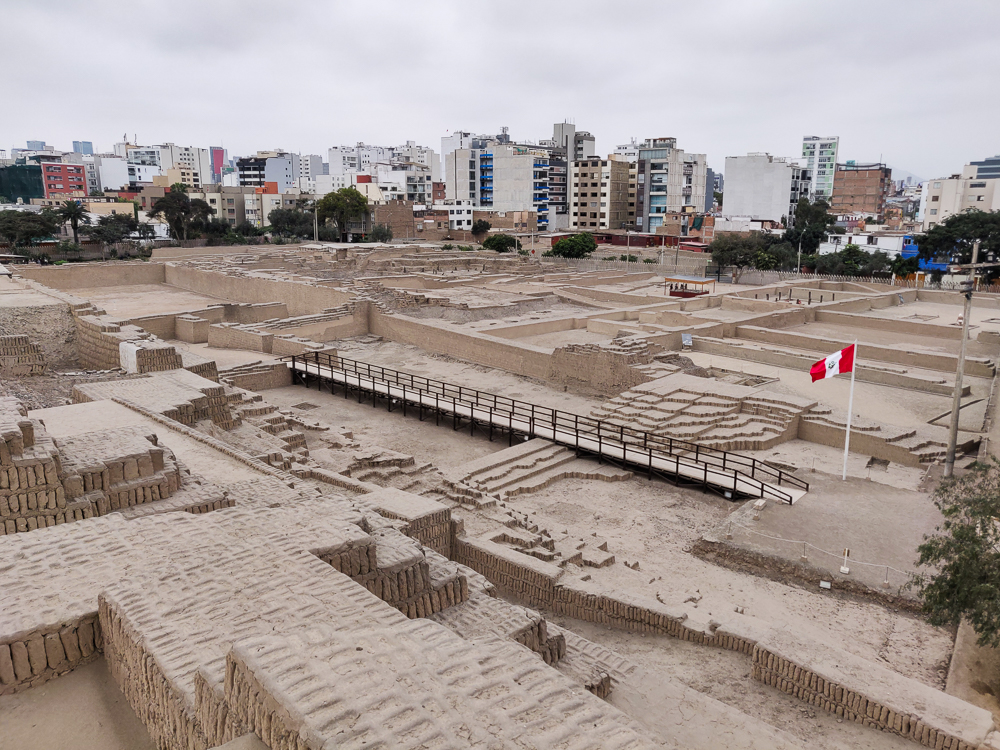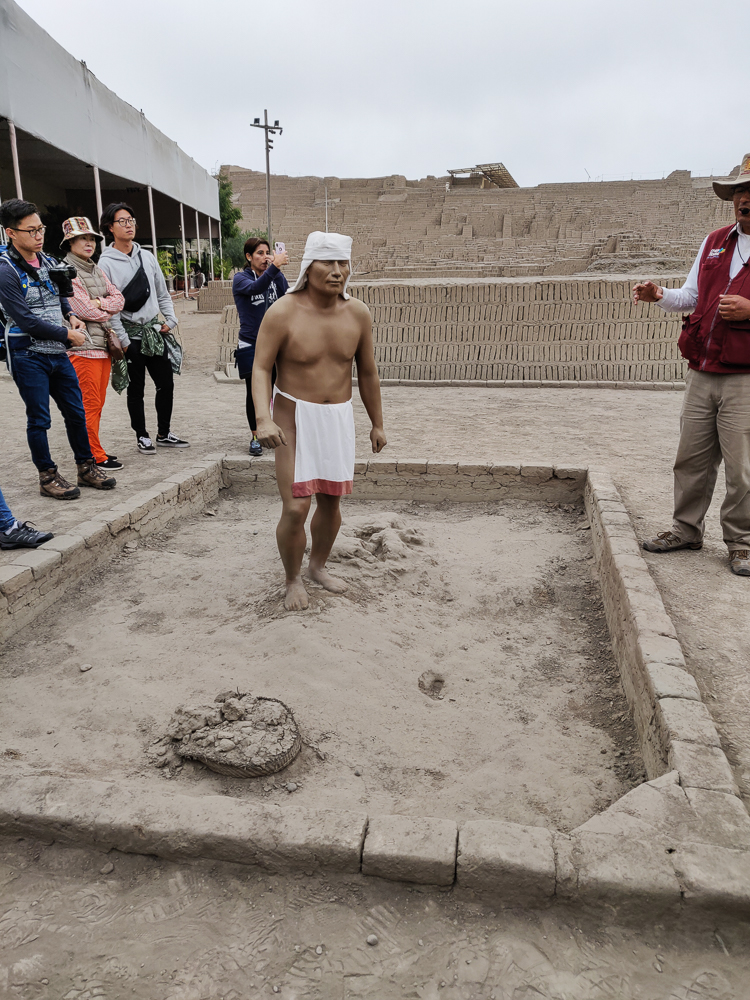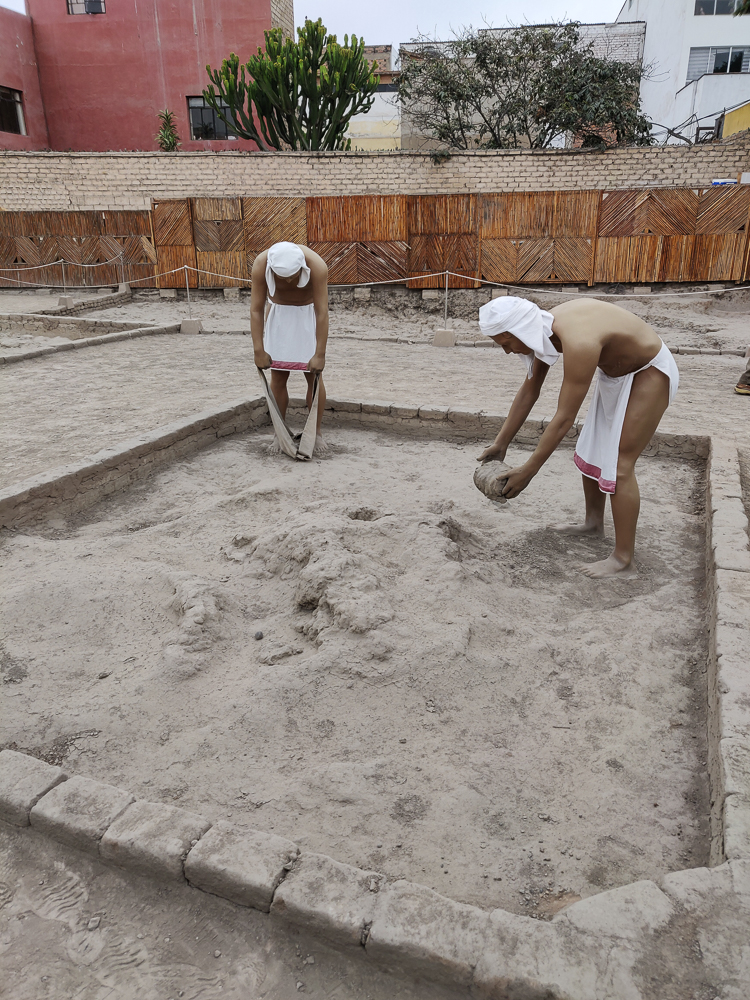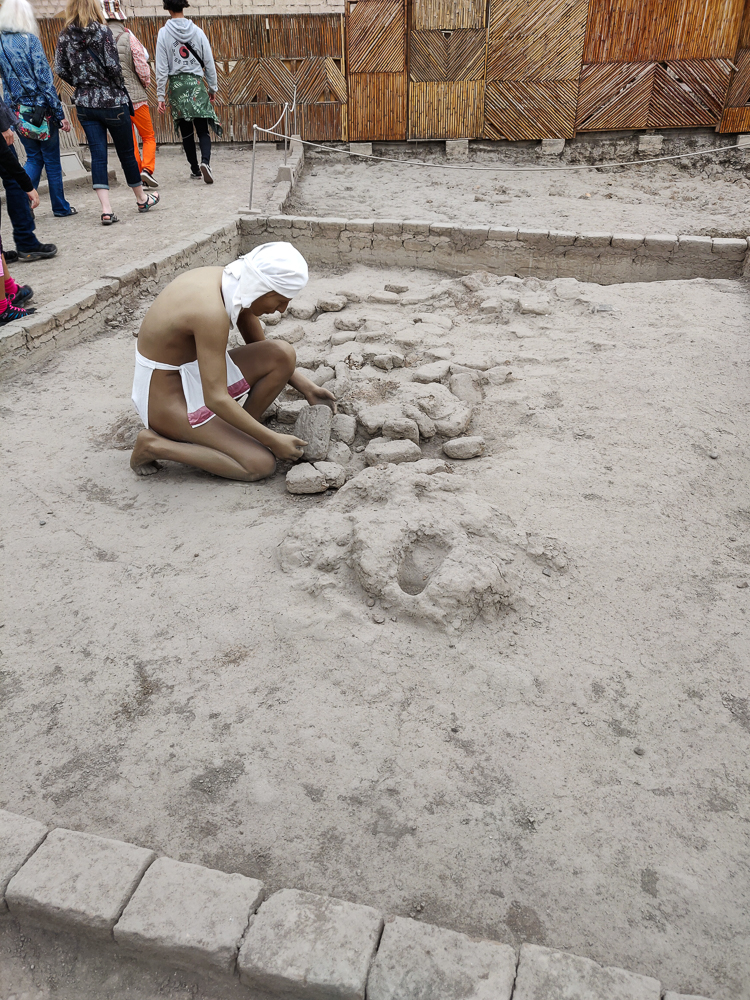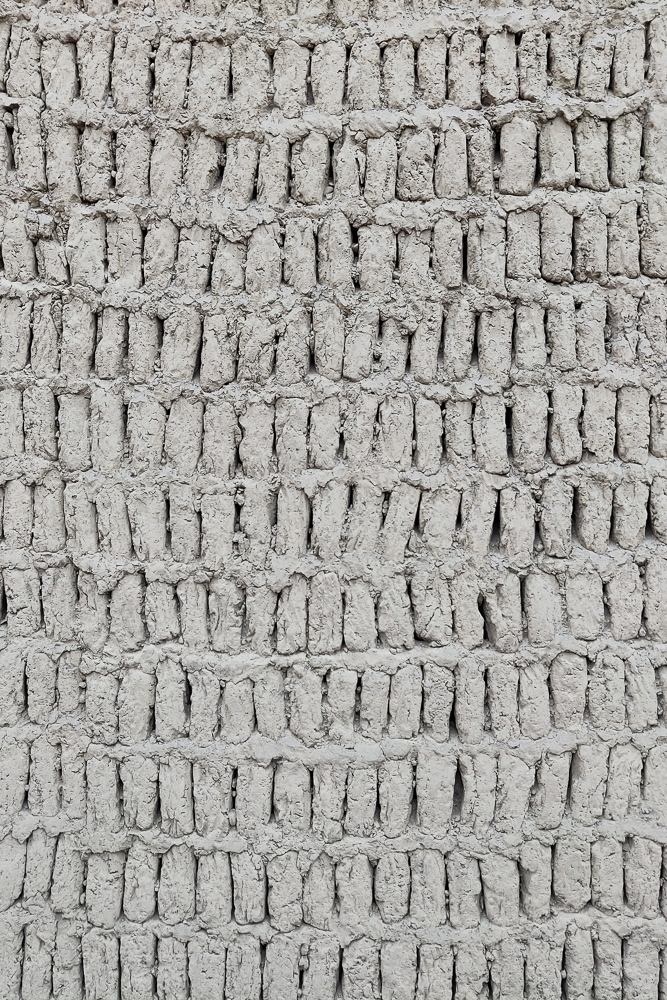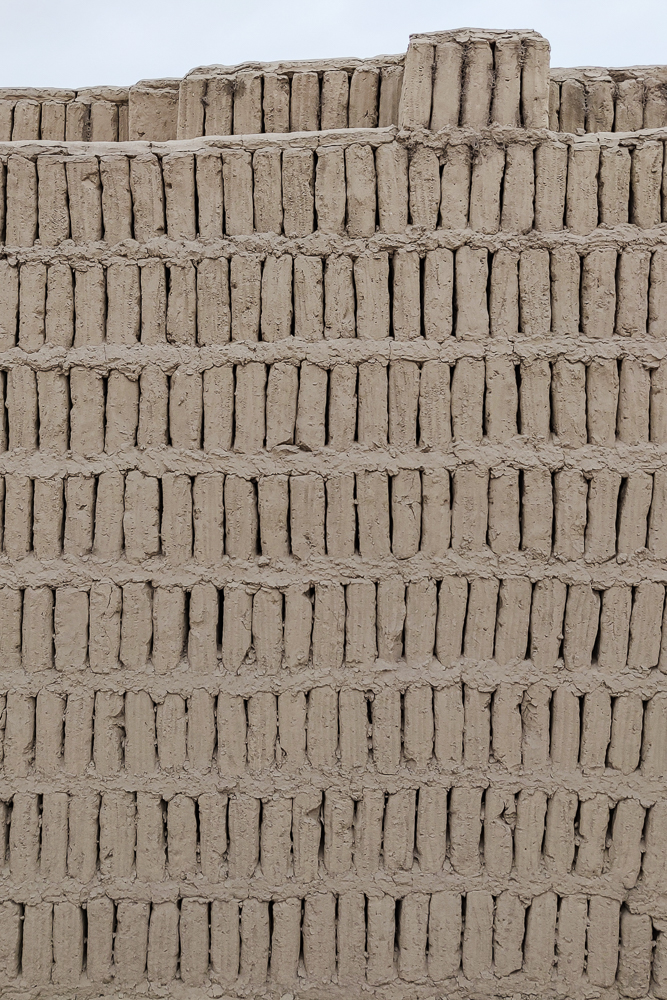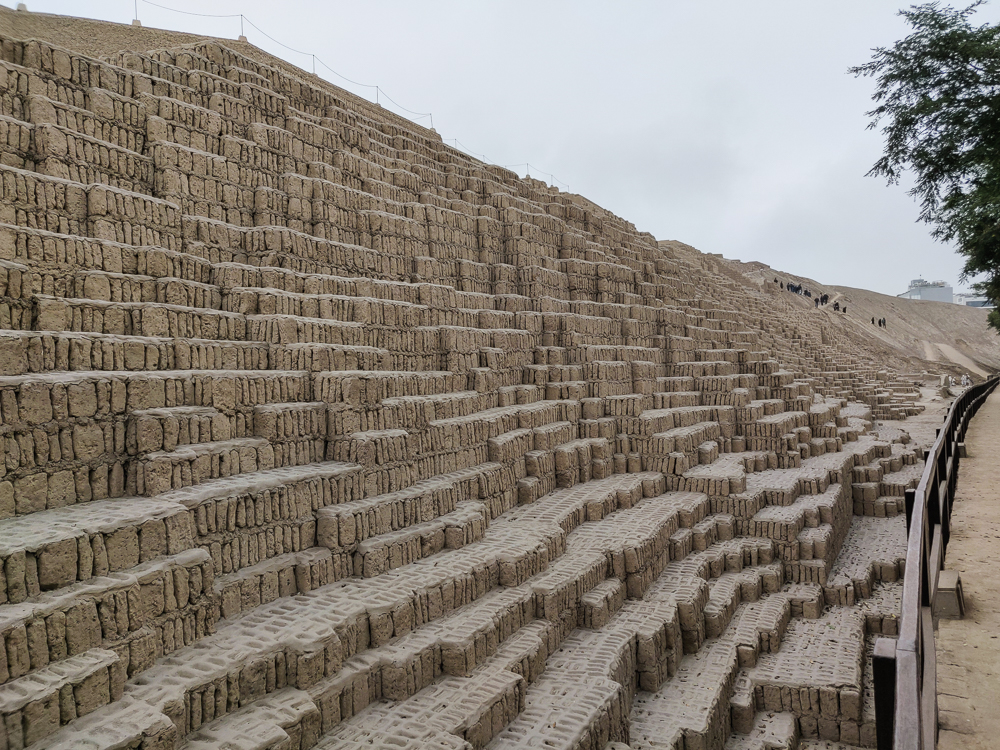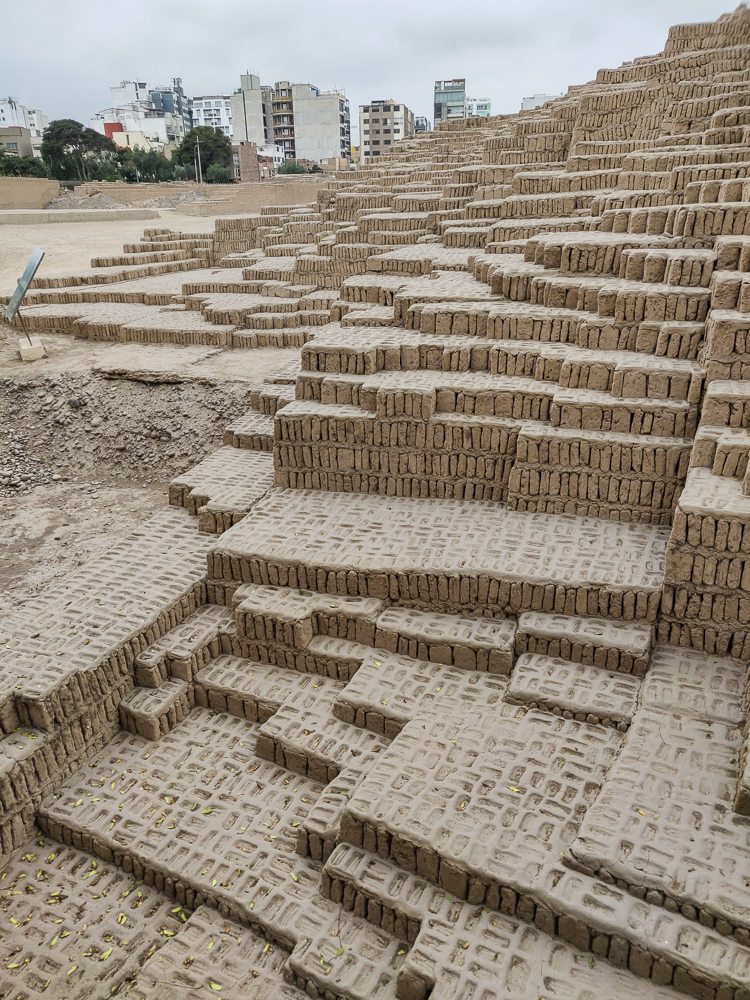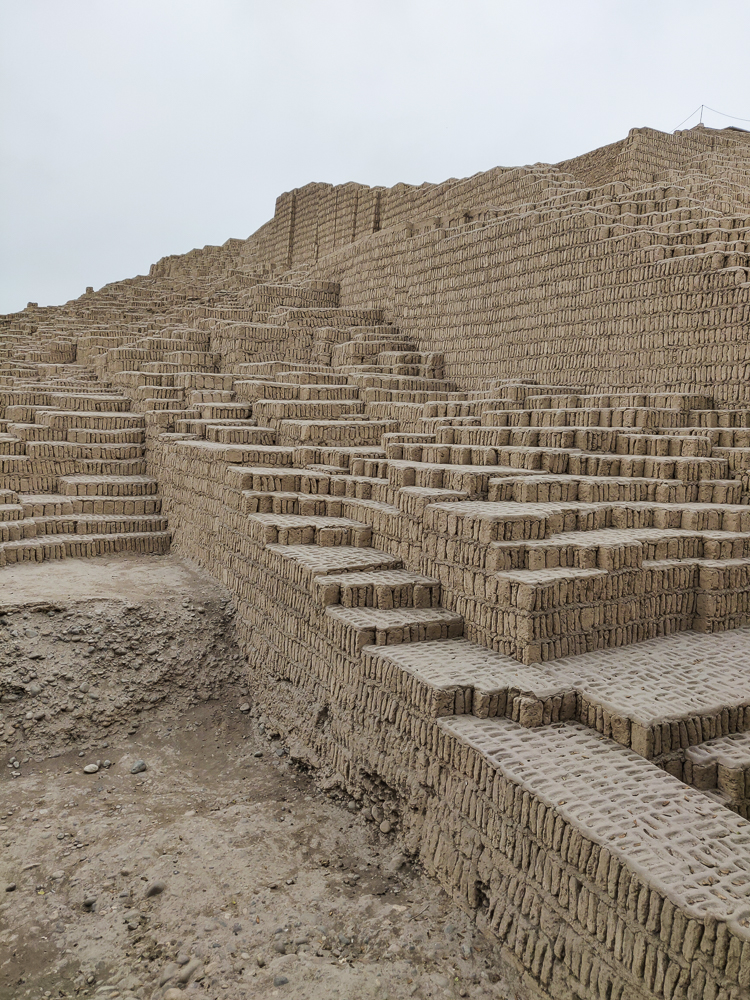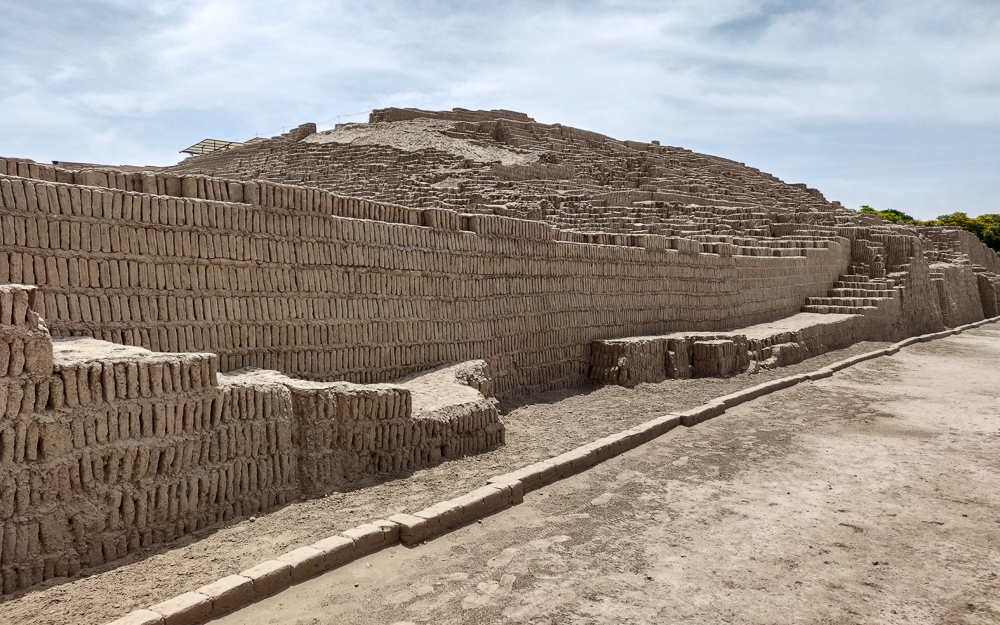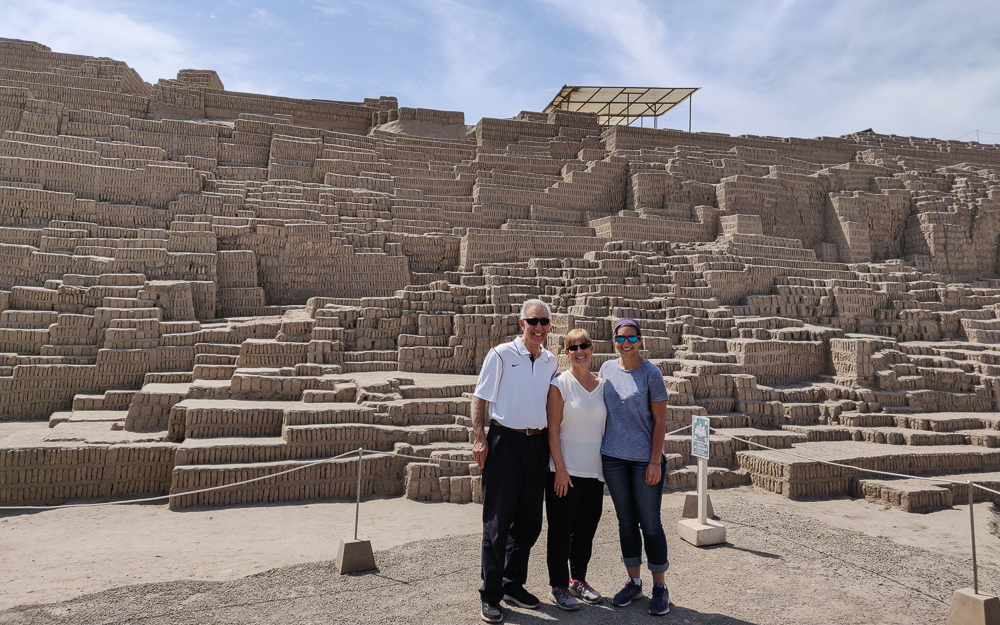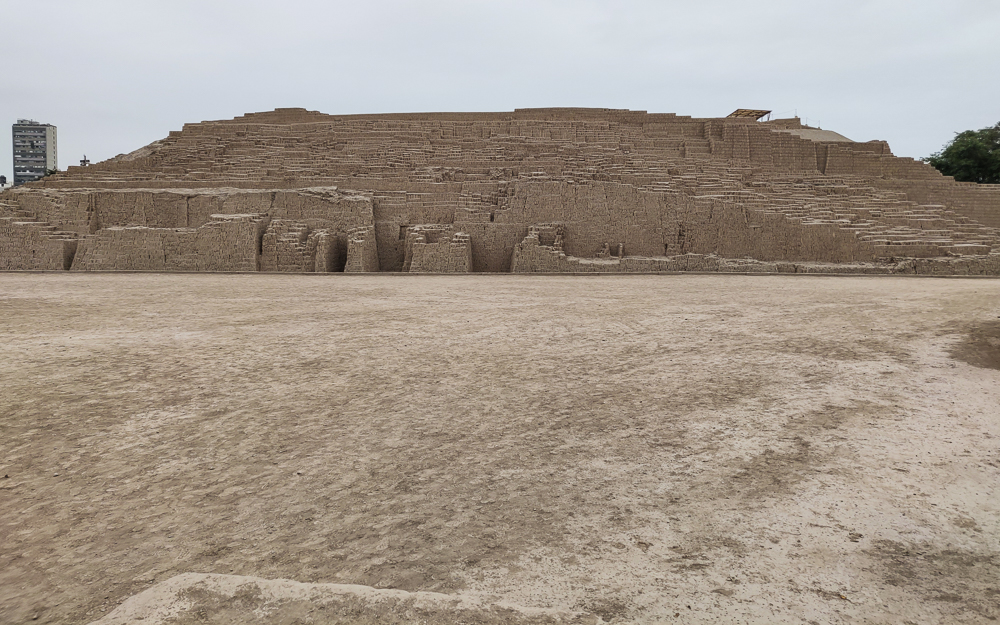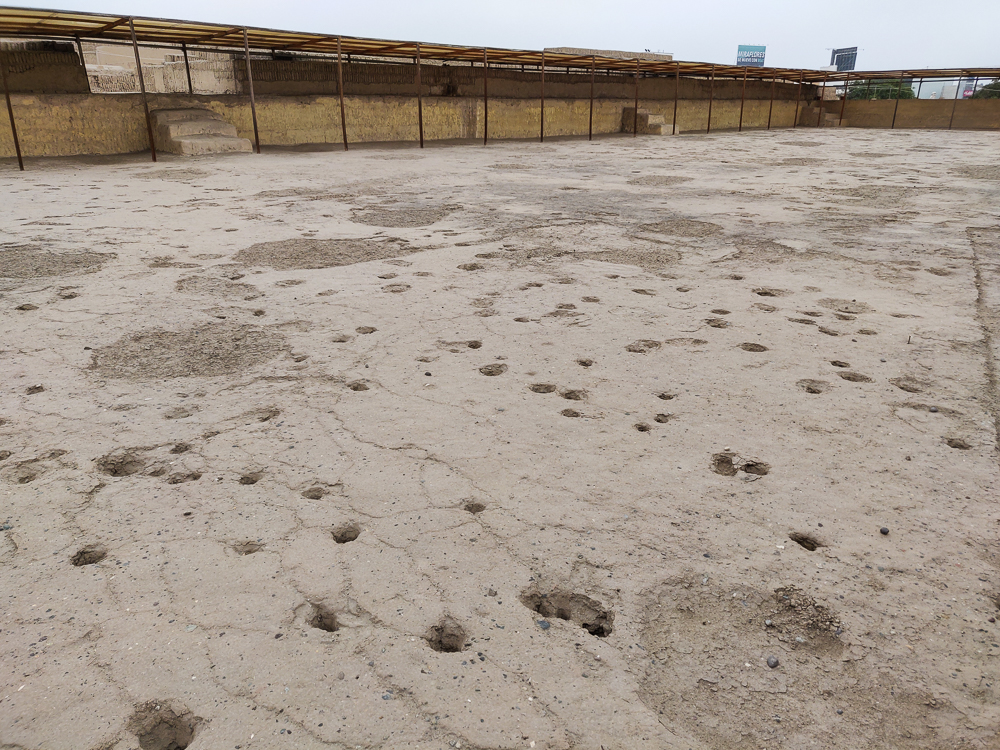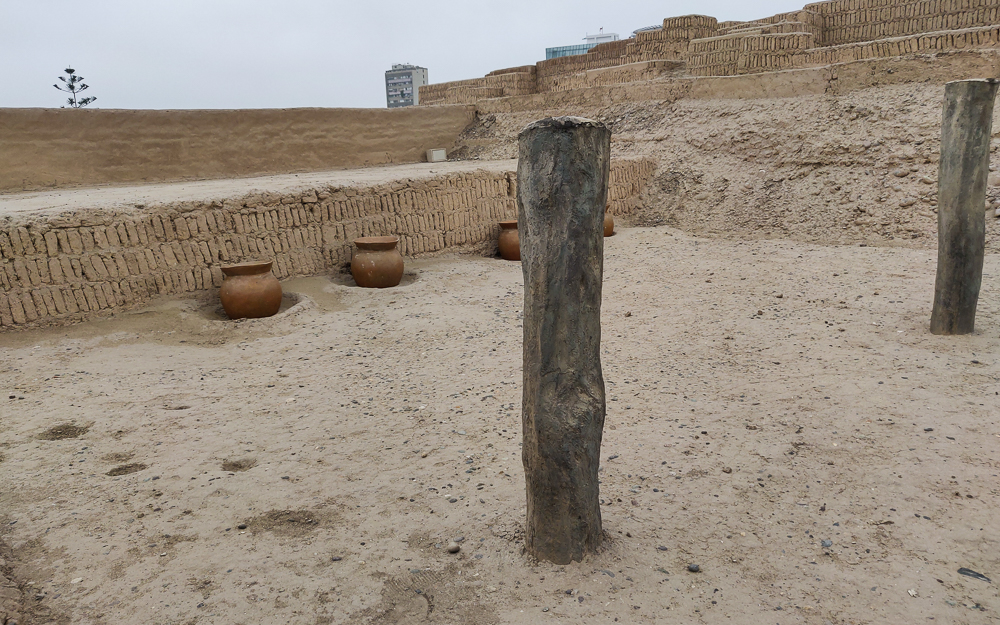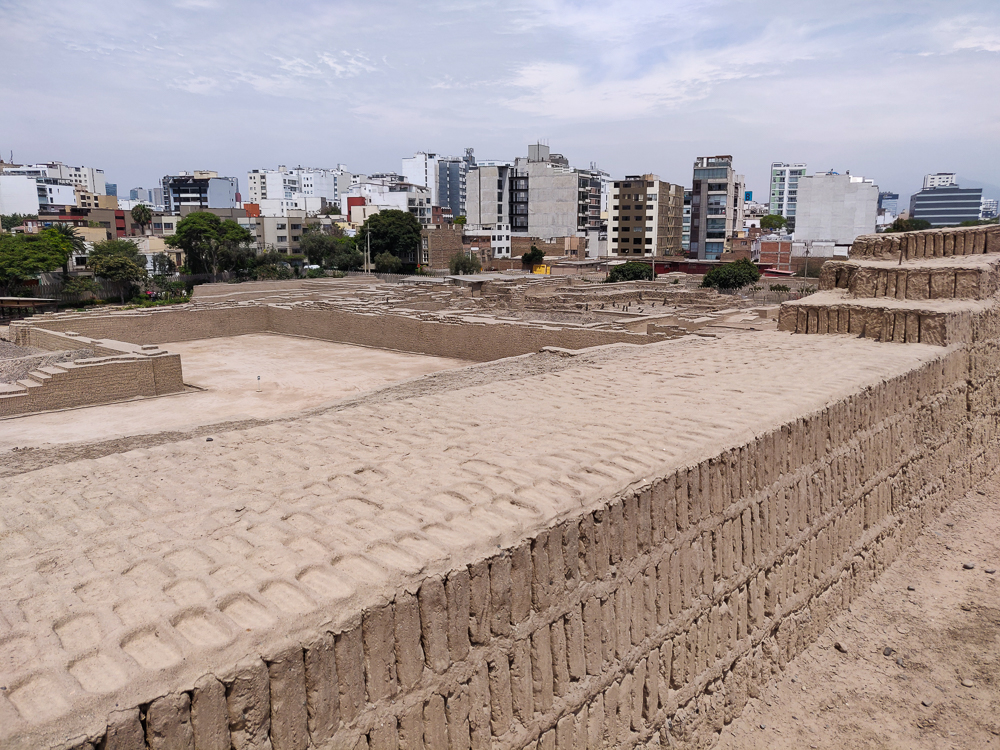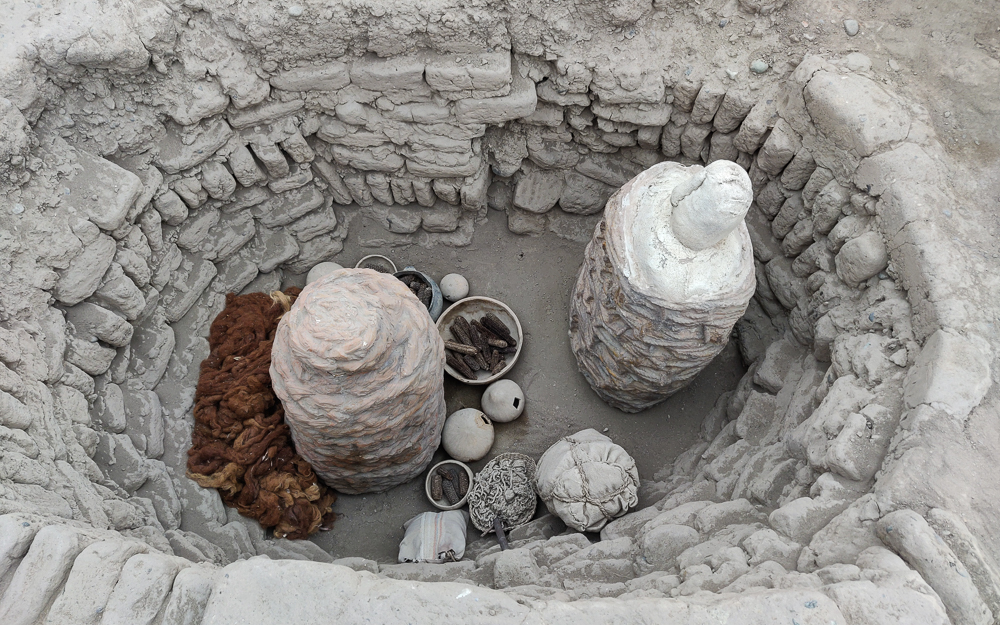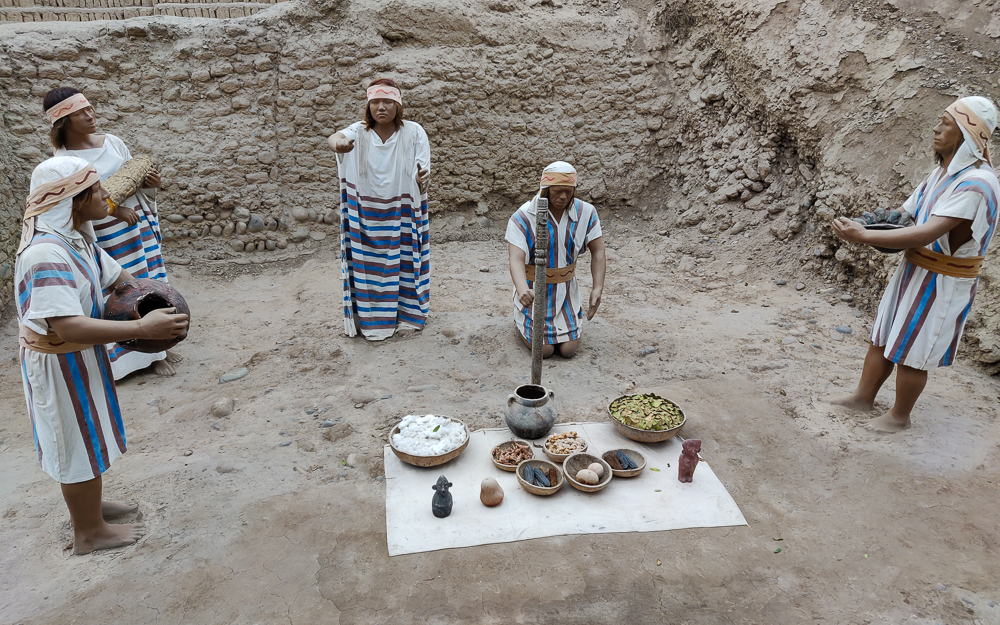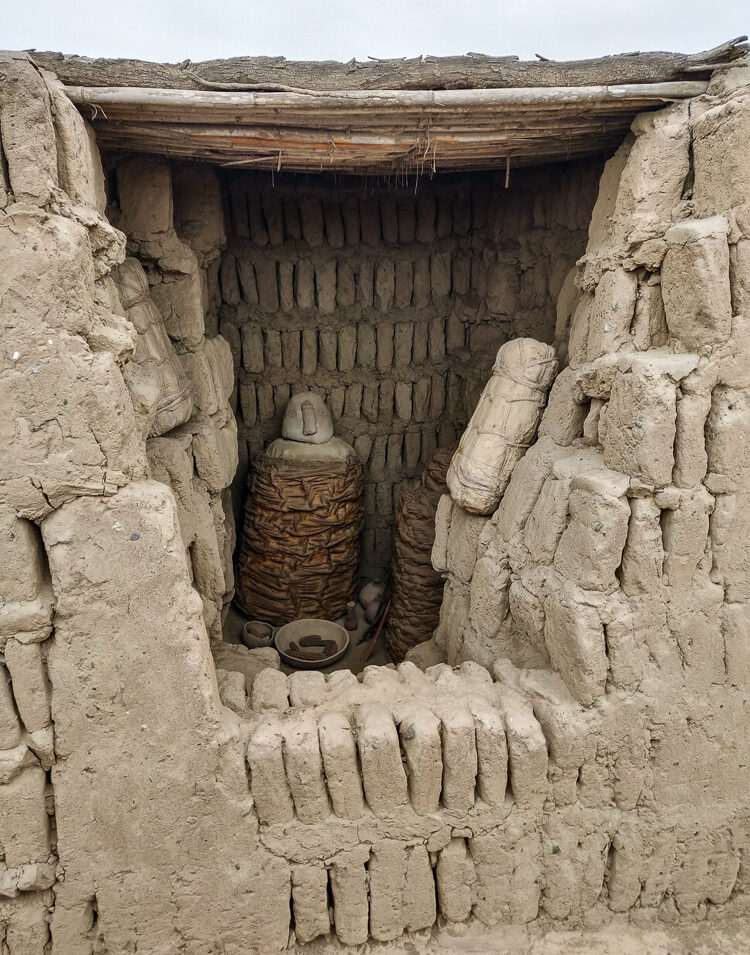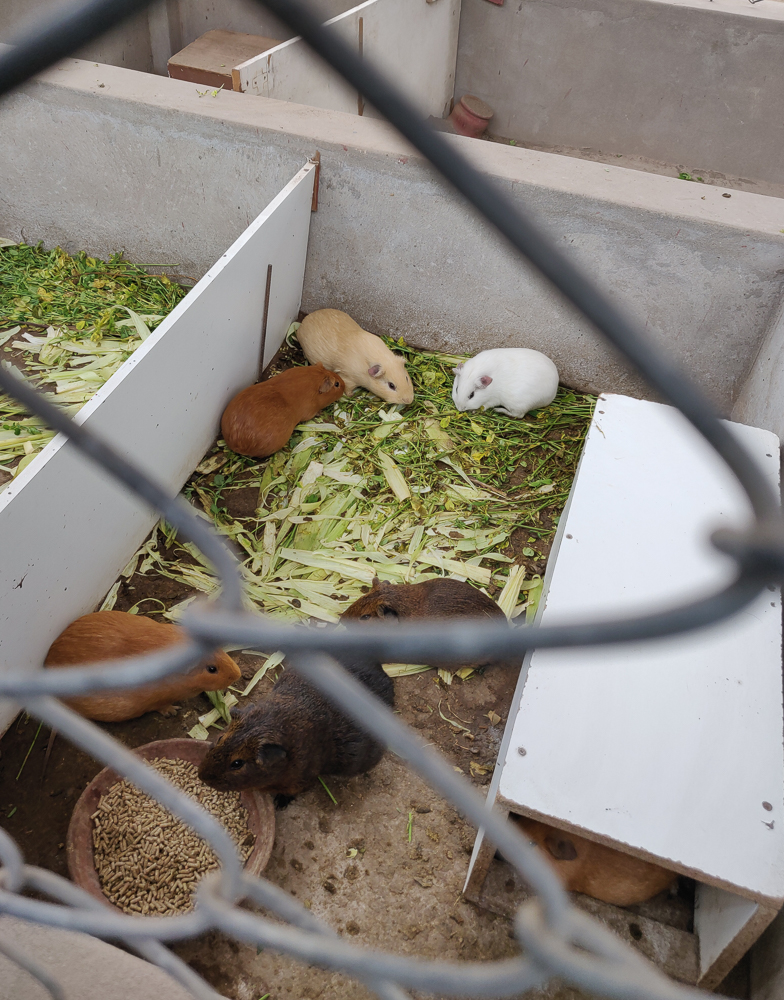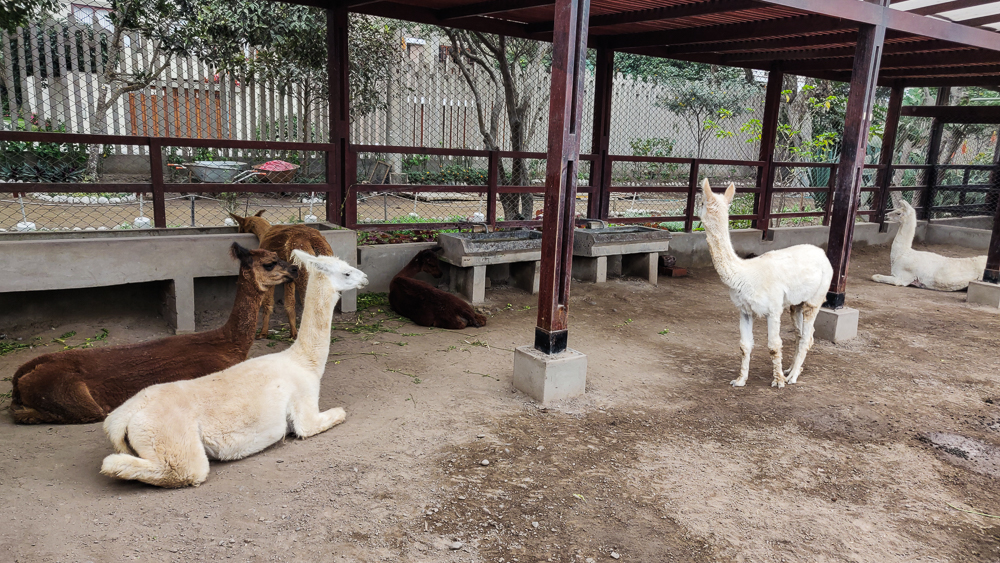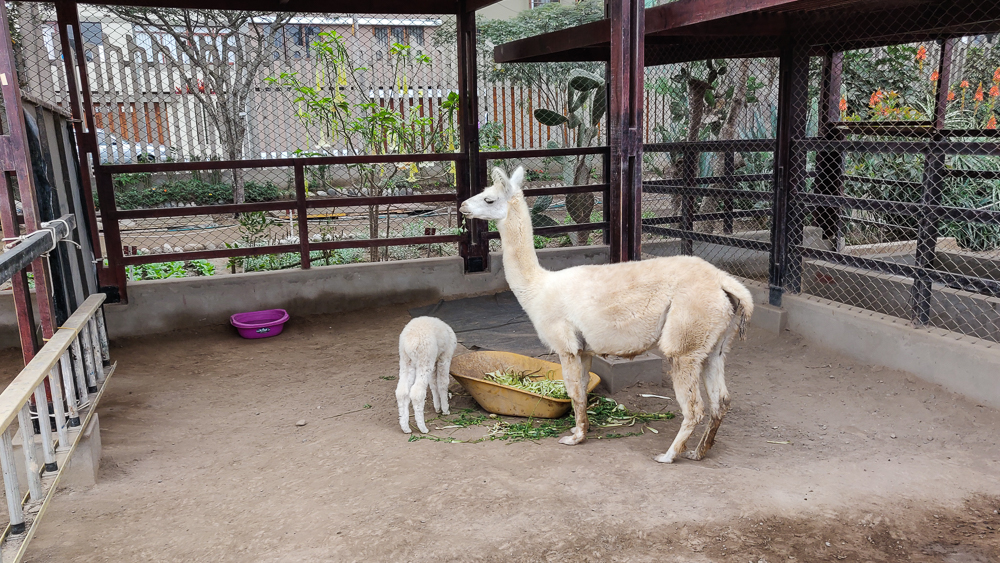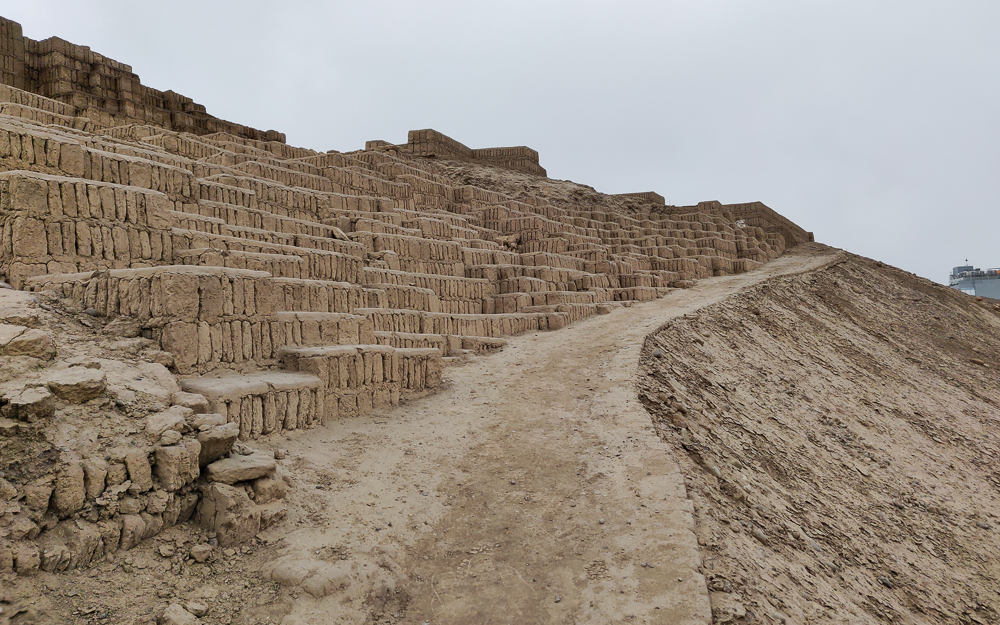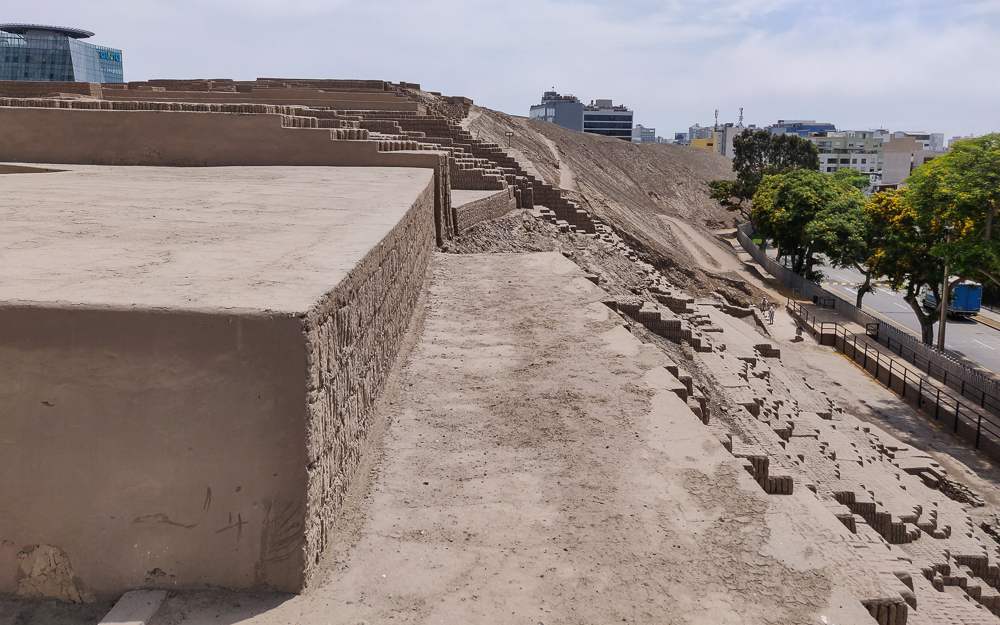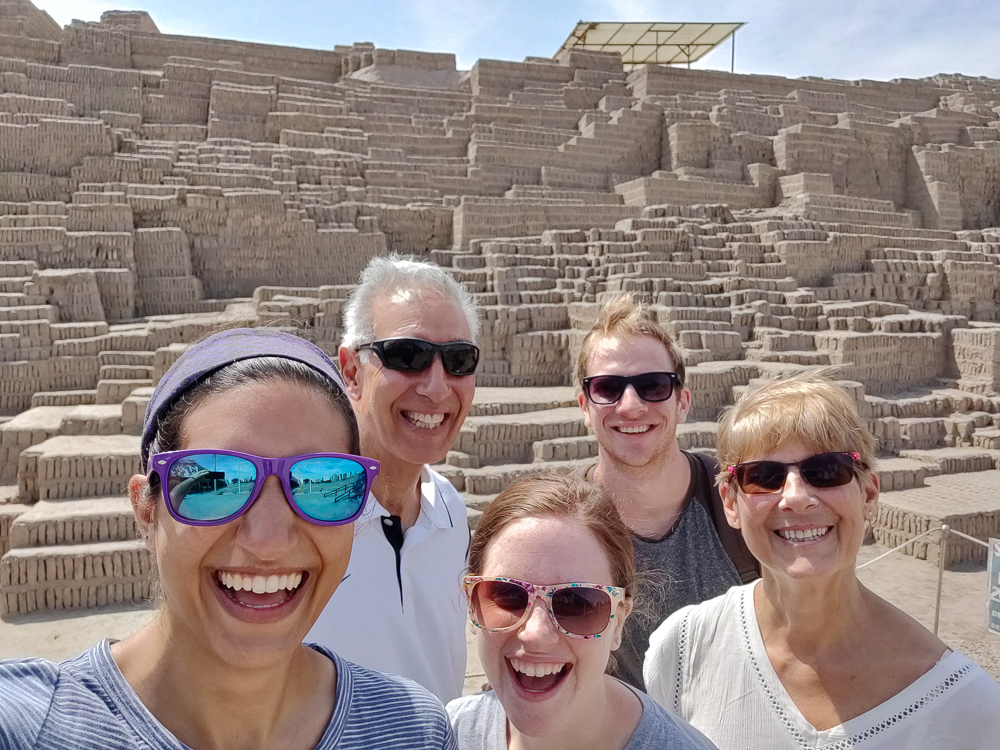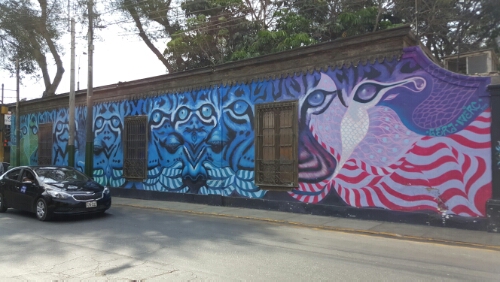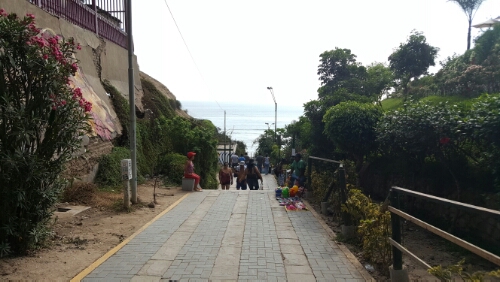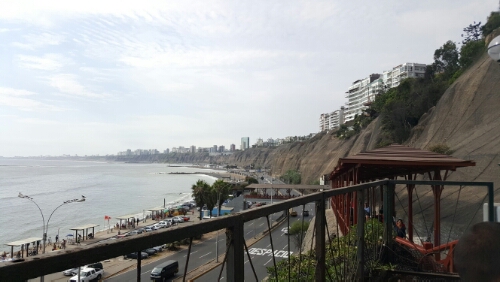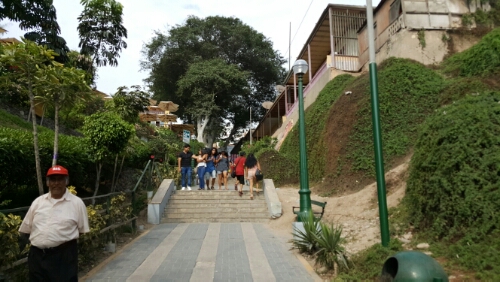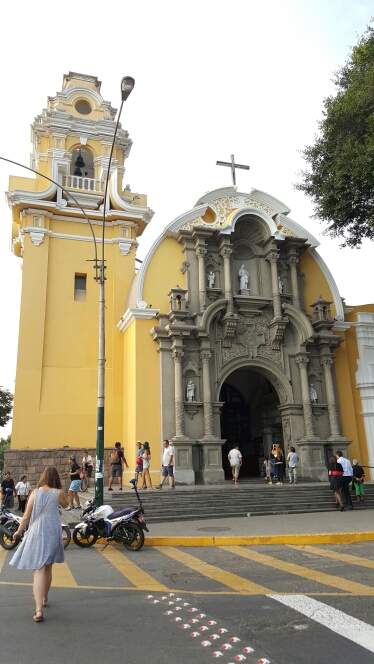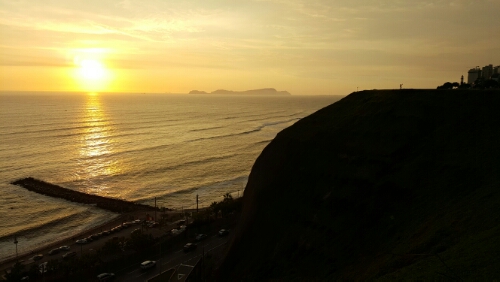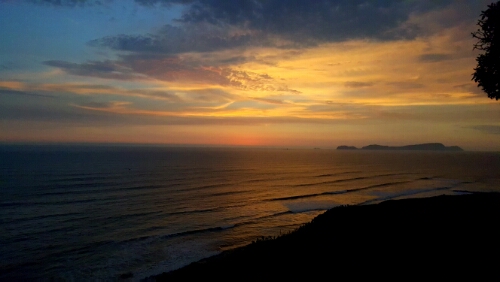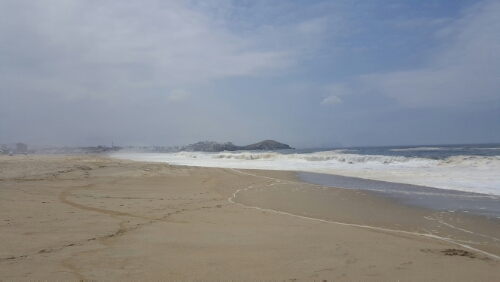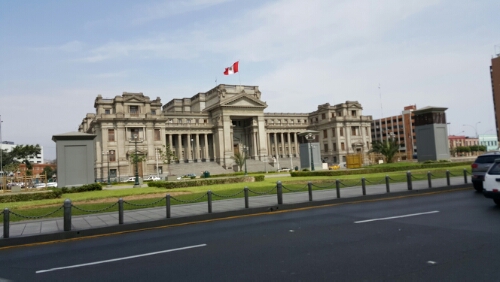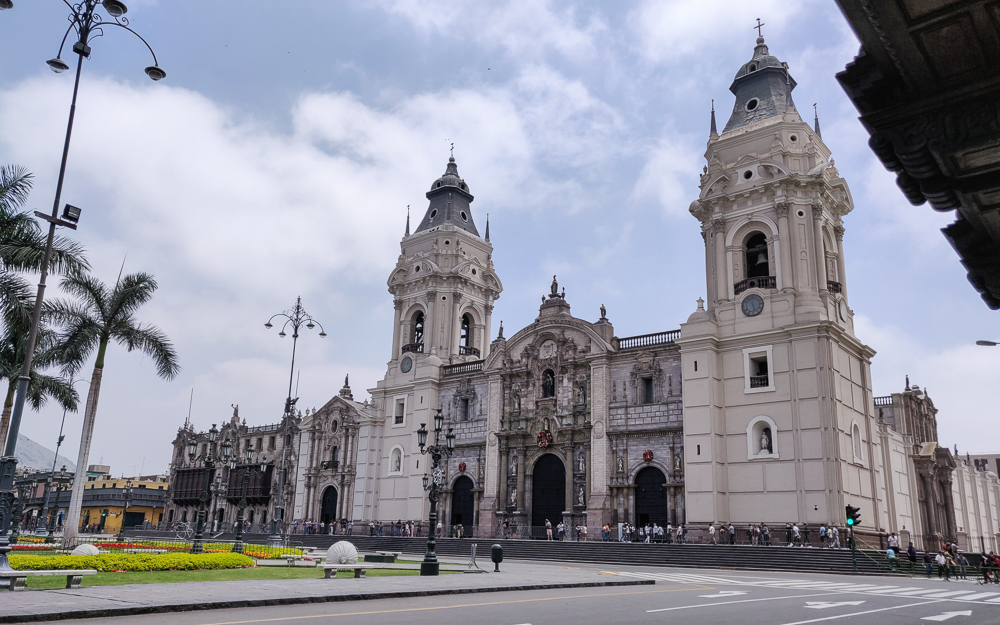
Following our visit to Huaca Pucllana, we enjoyed a leisurely stroll through Miraflores (fancy Lima neighborhood). We walked out toward the water and followed the Malecón, a path along the coast, to Larcomar, a mall built into the Miraflores cliffs. The walk is pretty, with lots of little parks along the way and a nice view of the Pacific Ocean.
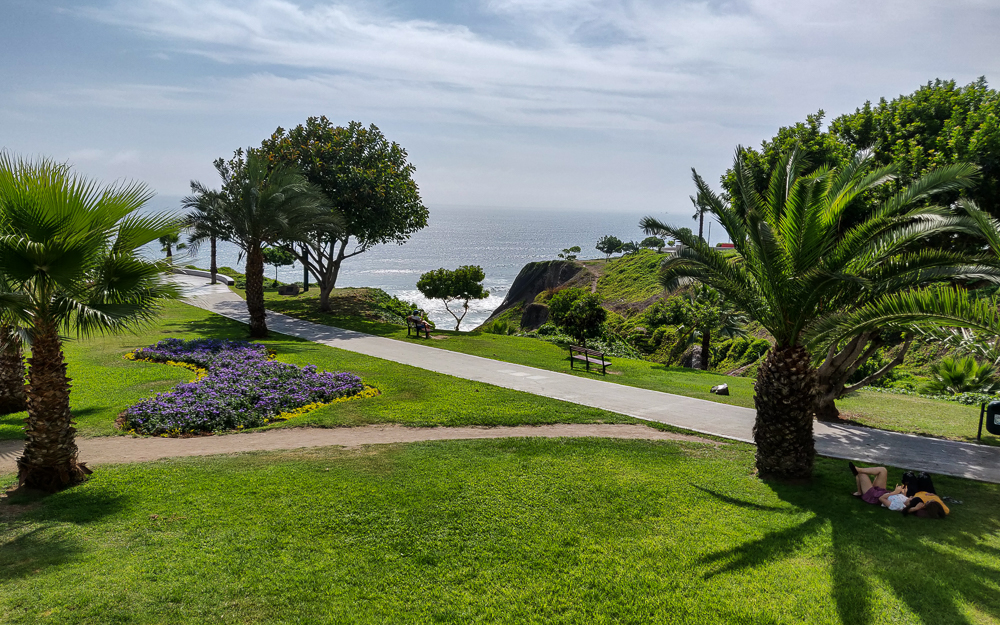


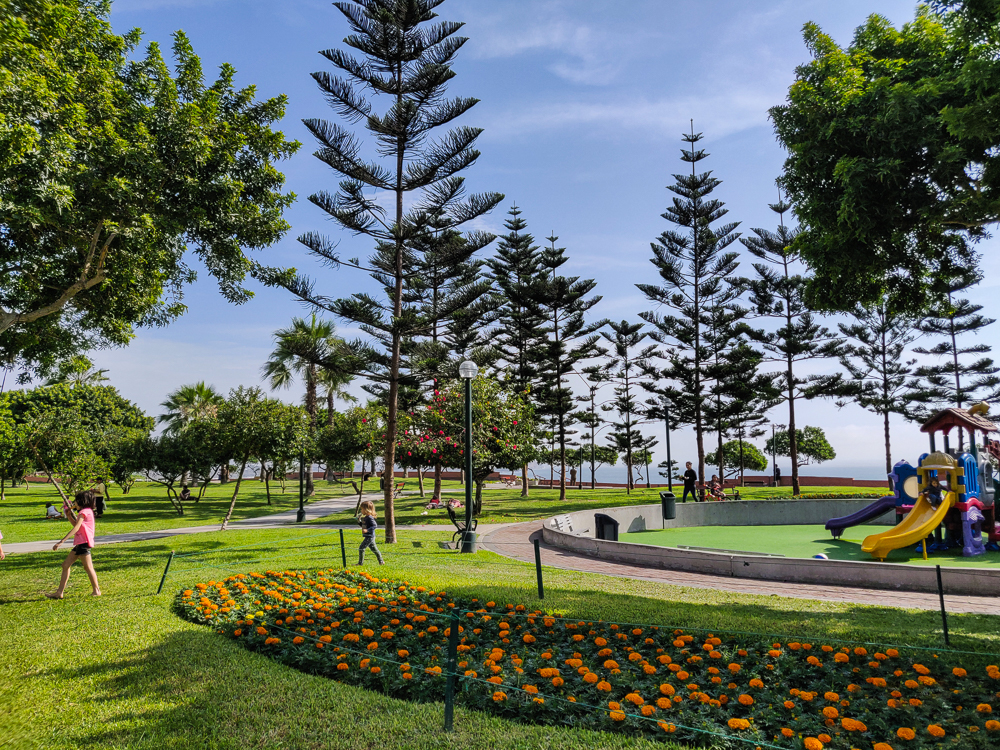
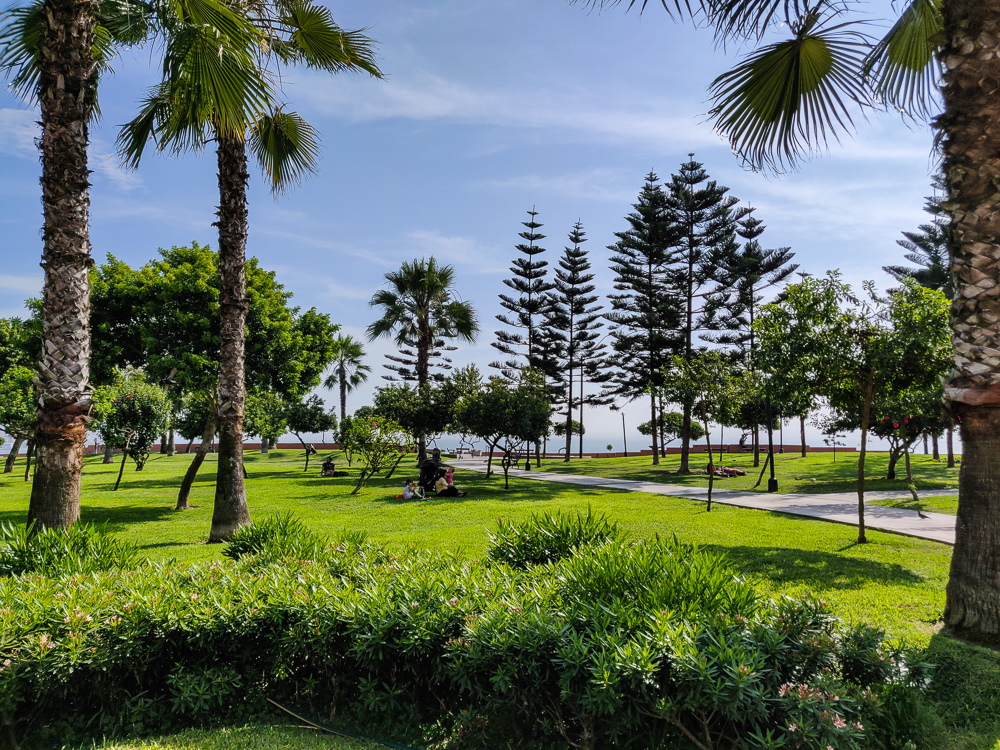
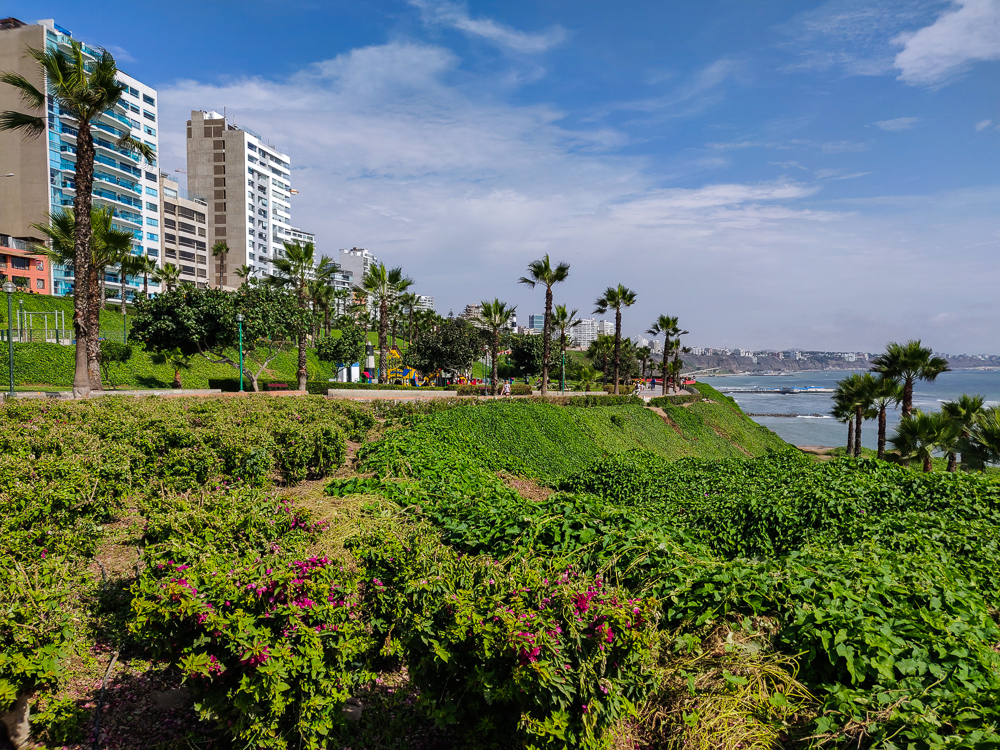
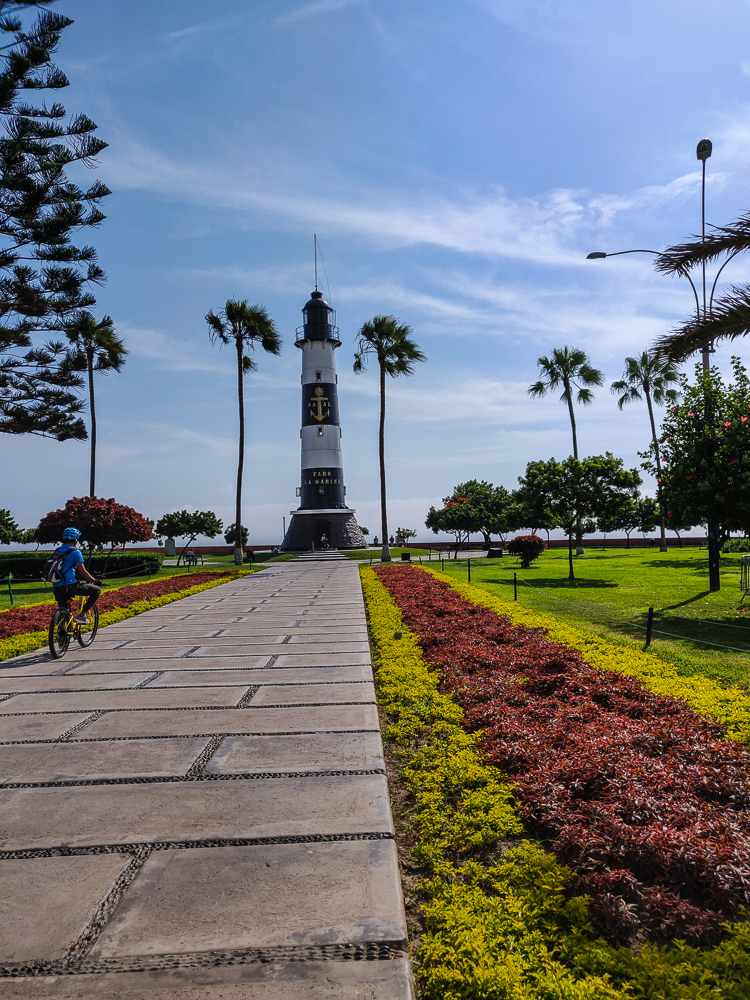
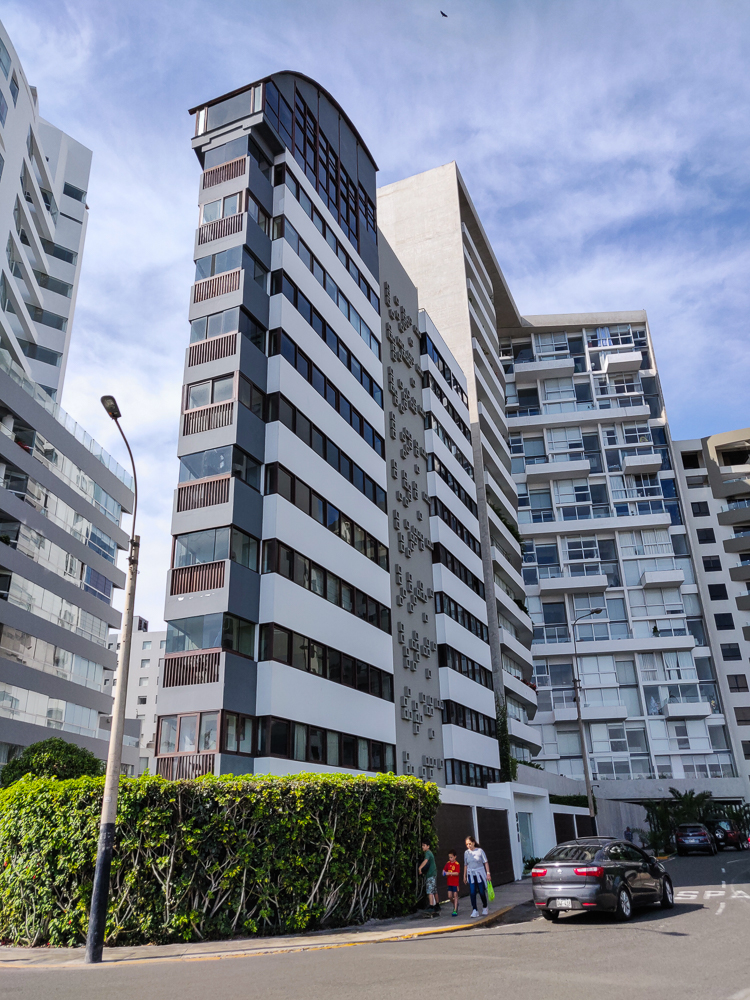
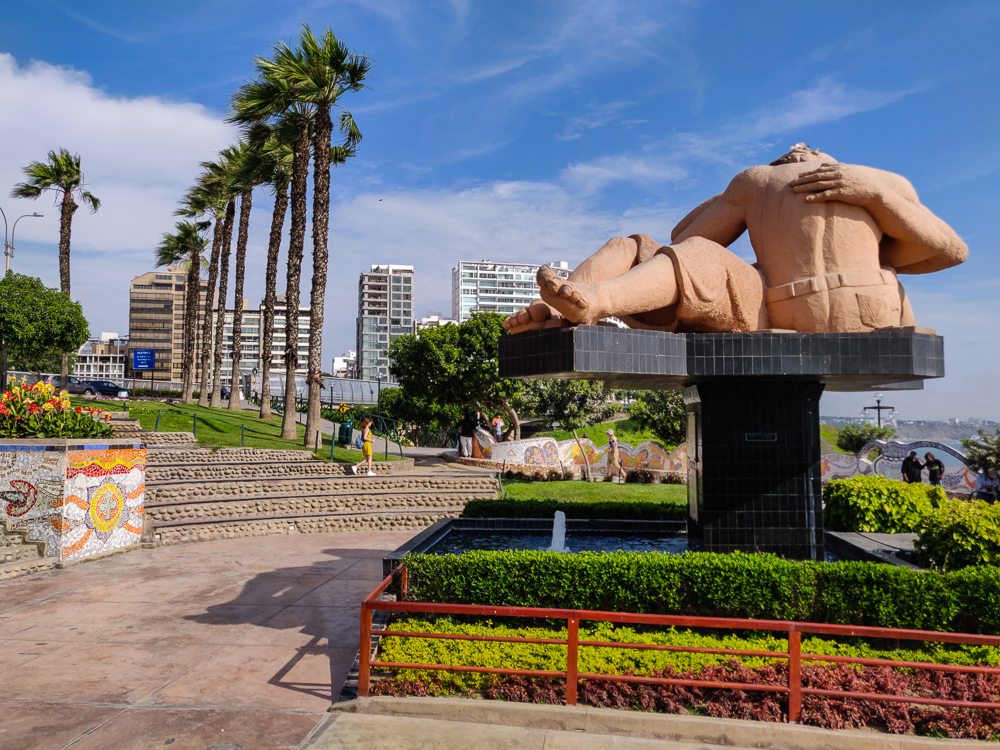
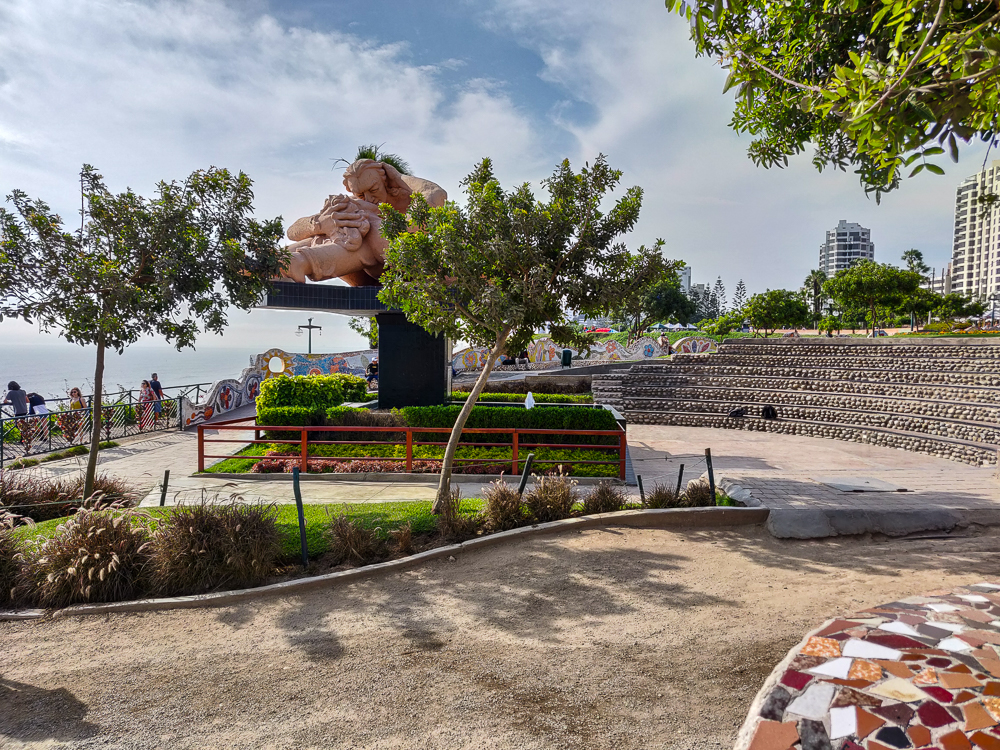
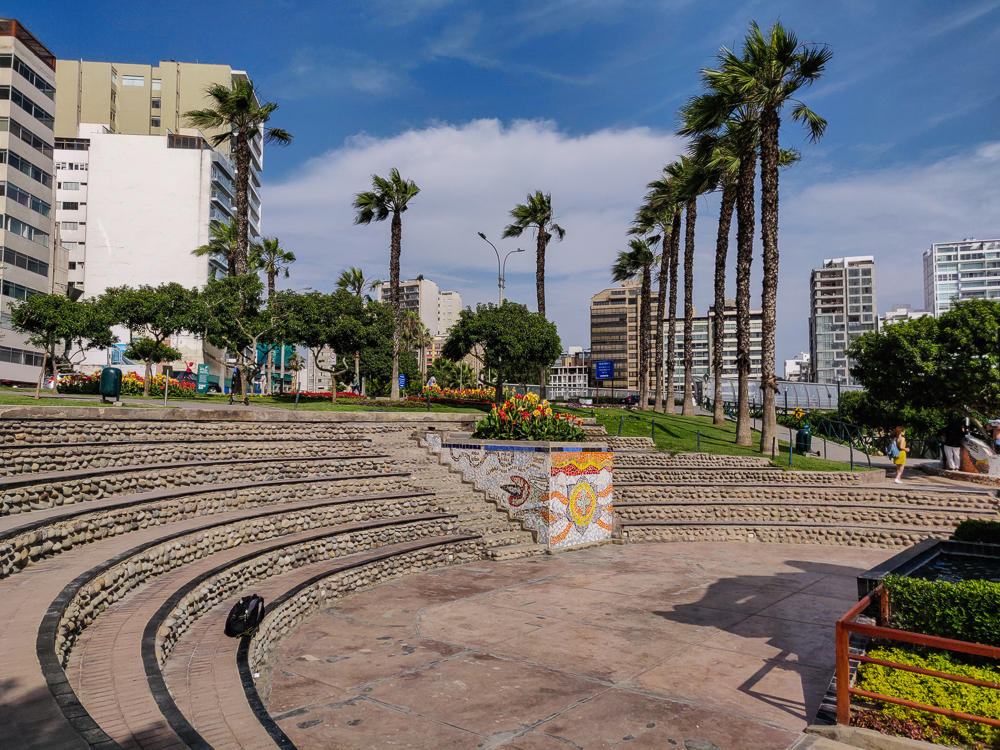
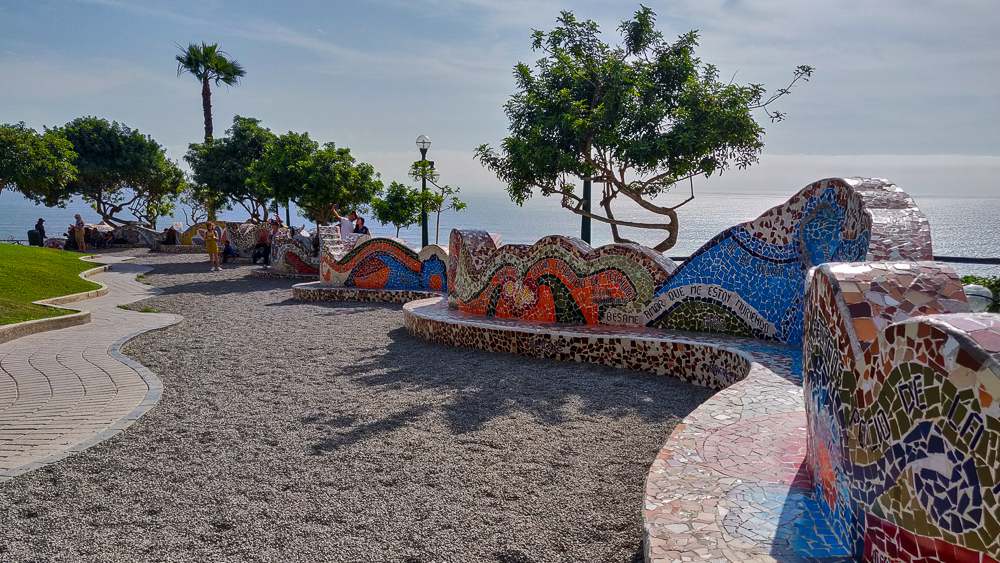

The timing worked out just right. We made it to Larcomar, ate dinner, and walked back to our hotel with a few minutes to spare before Jocelyn and Benjamin’s taxi came to take them to the airport. Saying goodbye to Jocelyn was harder than I expected. I think that I had been ignoring the fact that we were saying goodbye for real this time, unlike when I left Esperanza de Ana a week and a half earlier and said “bye for now/see you in a week”. I had gotten spoiled by staying in one place for a whole year and not having to say constant goodbyes, but reality sank in as I watched the cab drive away. Of course we’ll still be friends, but we’ll never live together again or see each other every day or bond over weekly, Sunday-evening pancakes… It just won’t be the same. And life is full of transitions like that, but the travel life seems to have more of them than normal. But what can you do besides savor where you are and move on when it’s time? I gave myself a second, blinked a few tears away, shoved those feelings down to be dealt with some other time (healthy, I know), and went back into the hotel to rejoin my parents.
The next day was everyone’s last in Peru. My parents had an early morning flight back to the States the following day, and I had a flight to Ecuador! And, it was my birthday! Lima isn’t the first place I would choose to be on my birthday, but it’s kind of hard to complain about being on vacation, no matter where exactly you are.
The adventure for the day was a journey into the historic center of Lima. We took the Metropolitano bus from Miraflores to the center of the city because it’s the best way to avoid dealing with the disaster that is Lima traffic. The pro is that there are dedicated bus lanes, so the drive is relatively painless. The con is that the buses can be suuuper packed. Like “suck in your stomach because otherwise you won’t fit” packed.
We didn’t have a very ambitious plan, for once. I wanted to go on a tour of the Convent of San Francisco, and otherwise, we were just going to walk around the city center and soak in the colonial architecture. After we got off the bus, we took the long way to the main square, the Plaza de Armas, loosely following a walking tour from my guidebook.
We started in the Plaza de San Martín. Named for Peru’s liberator, José de San Martín, it prominently features a large statue of him on horseback. The most interesting feature of the plaza, however, is on the base of the statue where there’s a statue of “Madre Patria”, the symbolic Mother of Peru. She was meant to be wearing a crown of flames, but some of the instructions got lost in non-translation. The word for flame in Spanish is “llama”… and the word for llama in Spanish is “llama”… so she’s wearing a little llama on her head instead. In my opinion, it was a fortunate mistake.
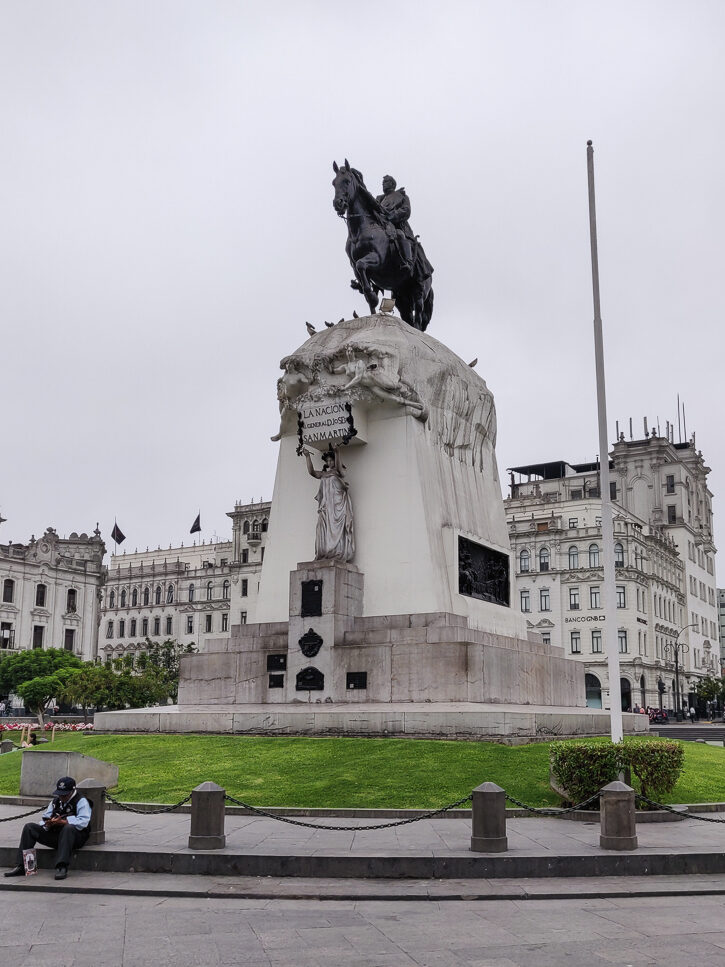
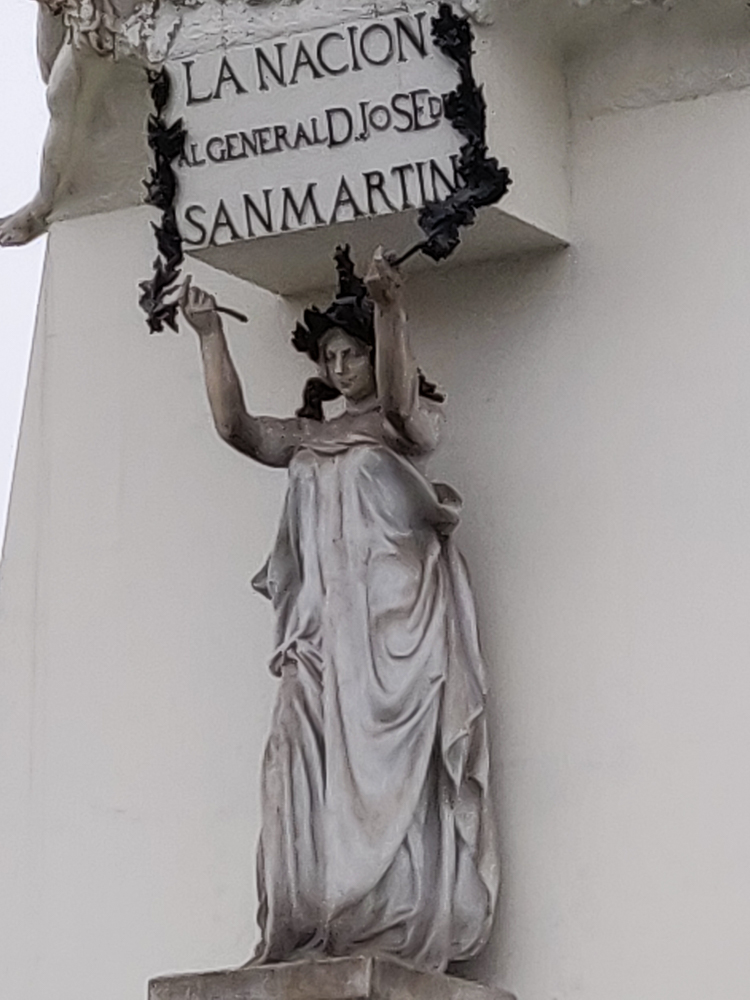
From there, we took a quick spin through some nearby churches. Since it was around Christmastime, they all had their nativity scenes set up. This is one of my favorite things. Churches go all out, and their displays are always impressive and often entertaining.
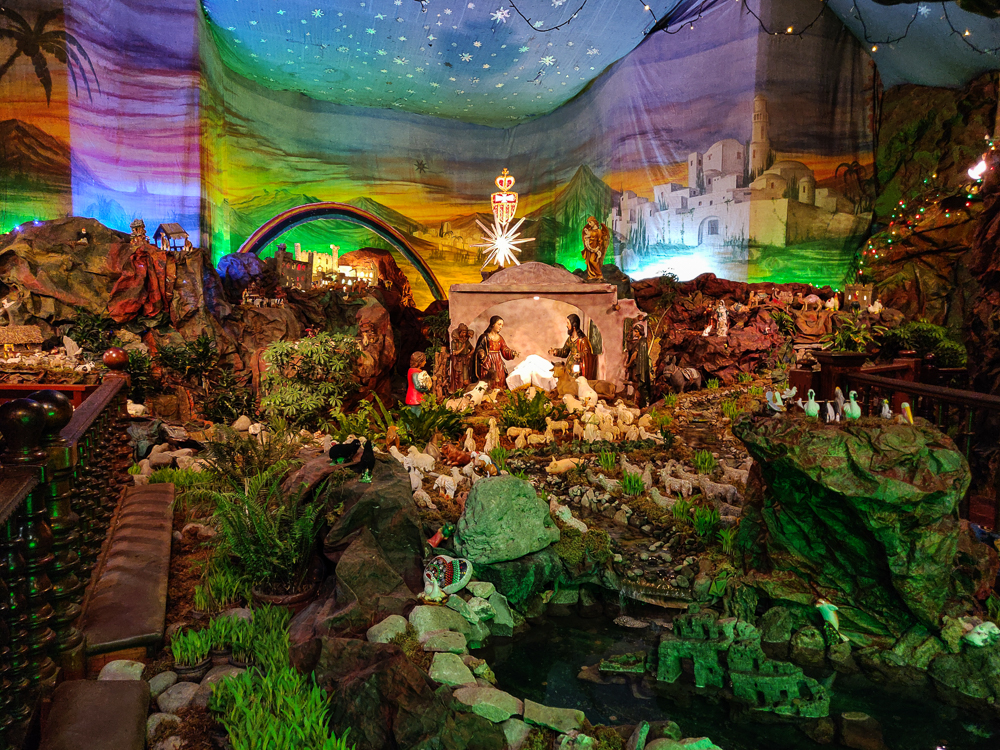


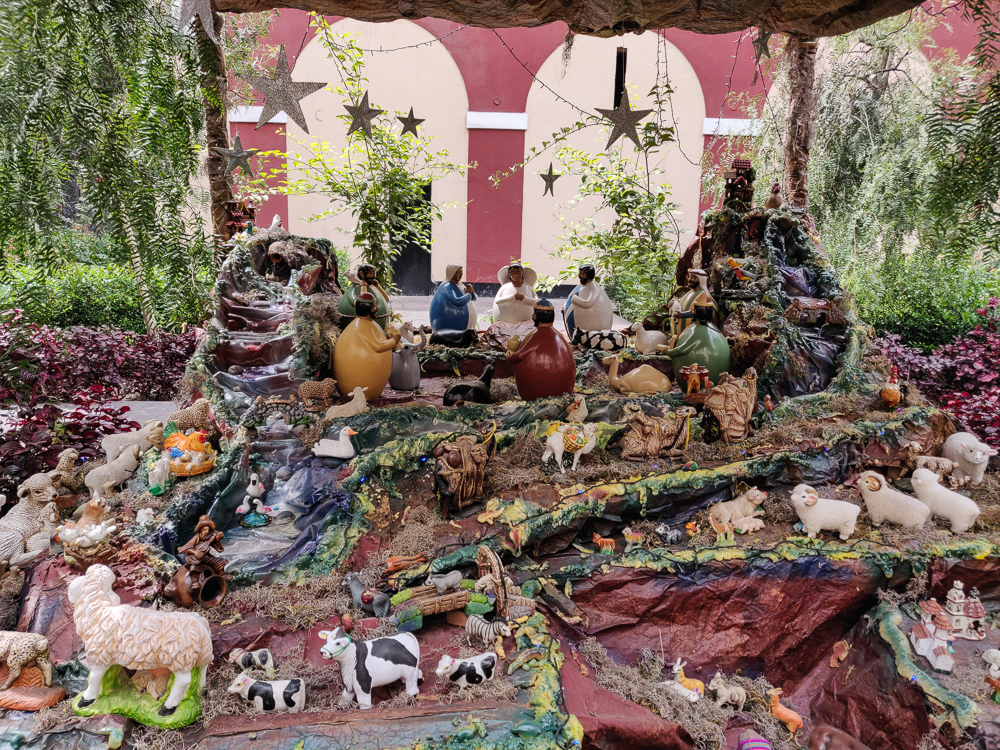
We made it to the Plaza de Armas in time for the changing of the guard at the Presidential Palace. Back in the days of the viceroy, when Peru and most of South America were a Spanish colony, the plaza hosted markets, bullfights, and executions. Now, it hosts tourists and protests… it was blocked off when we visited, and someone said that there was supposed to be a labor union protest later in the day.
Everything we read about the changing of the guard basically said that there’s no reason to go out of your way for it, but if you happen to be in the area around the right time, you might as well stop by to check it out. I think I’d agree. I mean, it’s about what I expected. There’s a band and a lot of marching and people doing high kicks while playing their instruments. They probably could have done it in 10 minutes max, but it went on for something like half an hour (though I don’t really know for sure because we didn’t stay the whole time).
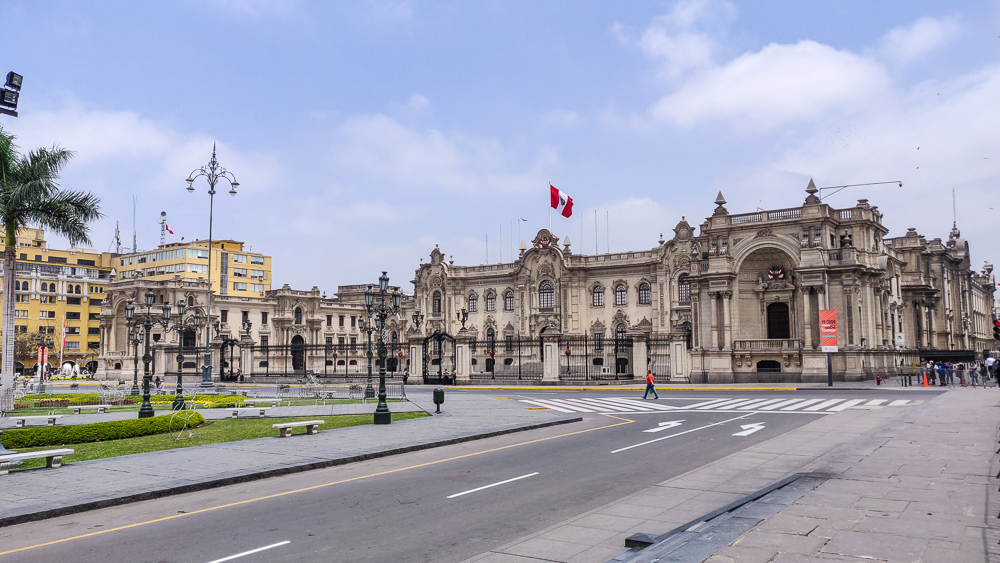

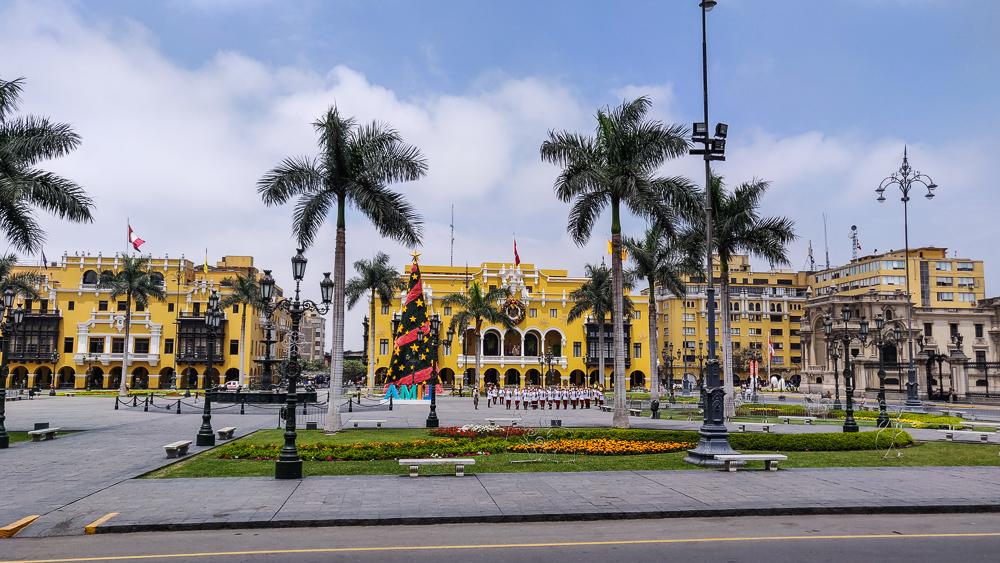
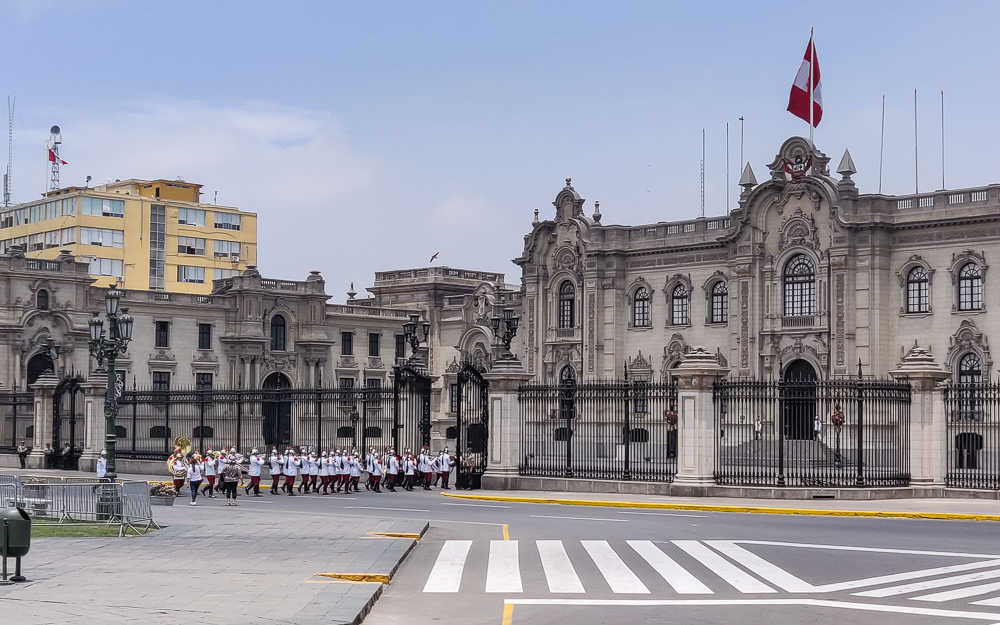
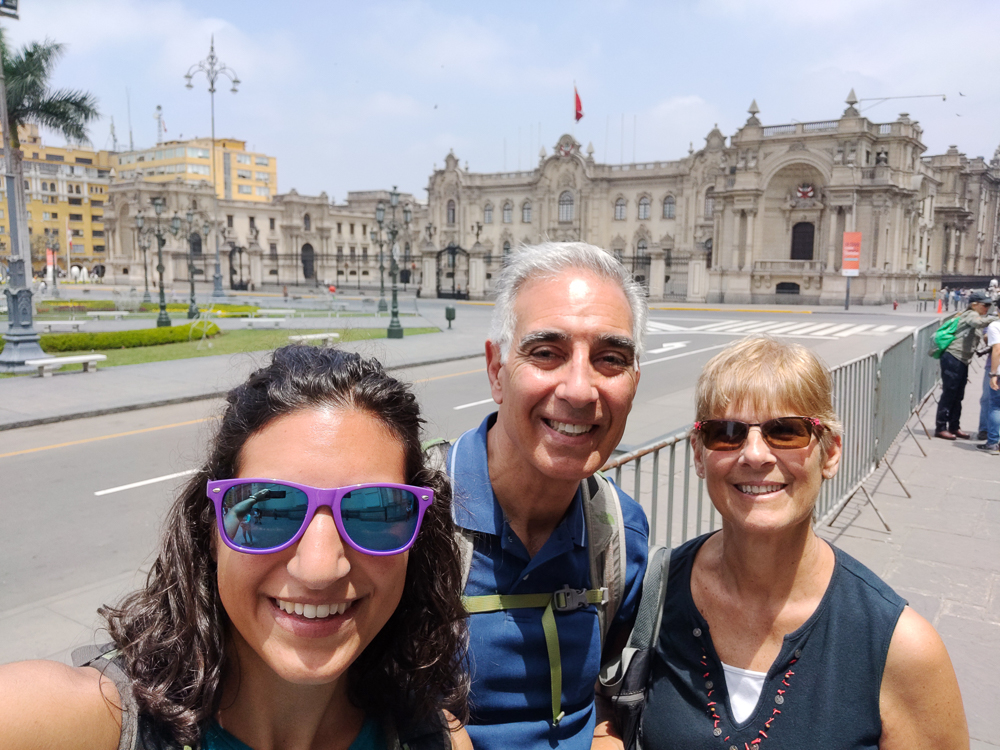
From there, we went to the Basilica and Convent of San Francisco for the one tour I insisted we do. I had been there before with teams from EA, and I wanted my parents to see it. The building has some really cool architectural features, and, most famously, the tour also takes you through the catacombs beneath the church. You’re not allowed to take pictures inside, so I’m not going to include any (though, admittedly, I did sneak a few for my personal “just for my memory” collection), but it’s about what you’d expect. Lots of bones, organized by type and arranged into bizarre and sometimes disturbing displays.
Personally, my favorite parts are not in the catacombs. I am obsessed with 1. The library. It’s totally a dream library, with a balcony level and fancy-looking spiral staircases and about 25,000 antique texts, and 2. The cedar, Moorish-style ceiling over one of the staircases. It is majestic. You can see a few pictures, including one of the ceiling, part of the library, and some catacomb skulls and bones, on their website.
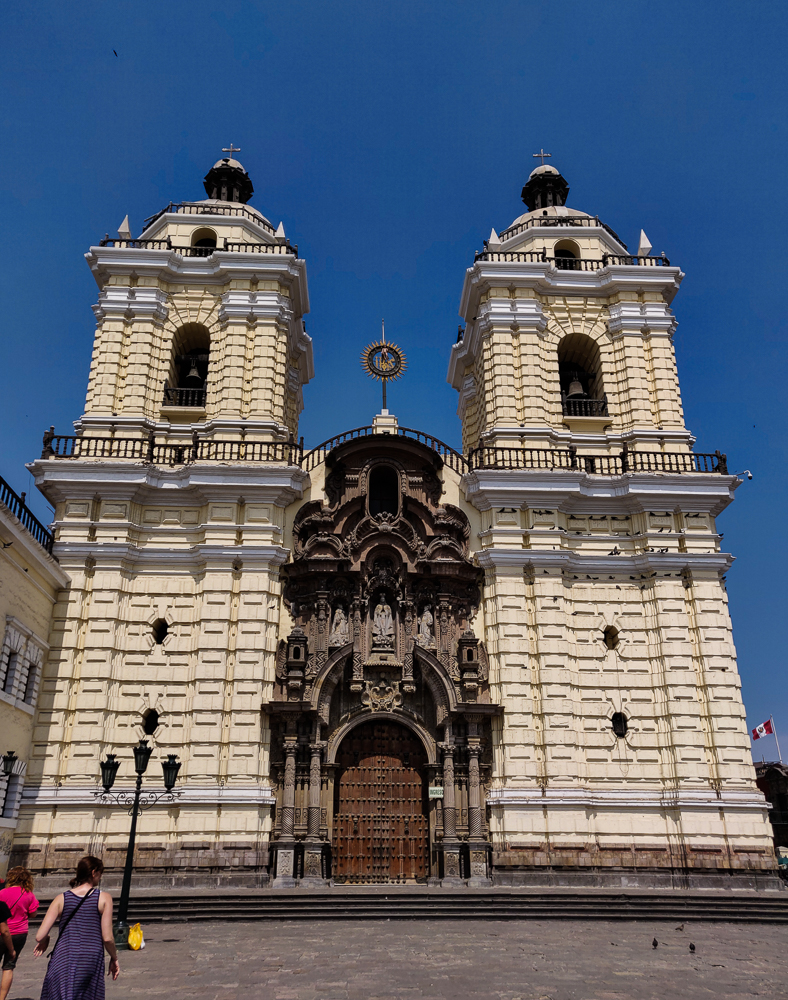
Our final stop was a nearby park that contains the ruins of the 17th– century city wall! When the Spanish arrived in 1535, the city of Lima was nothing more than a loose grouping of indigenous settlements. The Spanish built it up, implementing a street grid and building colonial-style buildings. In 1684, They added a city wall around the perimeter to protect against pirates. By the end of the 19th century, the wall had been mostly torn down to accommodate the expanding city, and the fragments in the park are the most substantial portions of the wall that remain today. There are also the remains of houses from the 17th century that were built into the wall. It’s pretty cool!
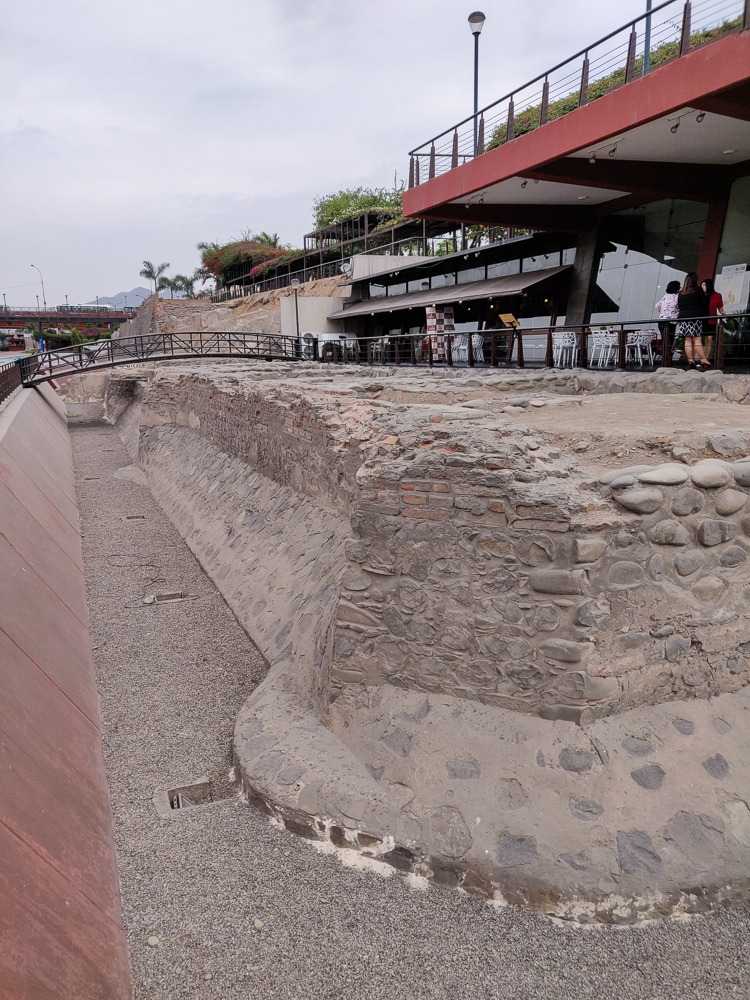
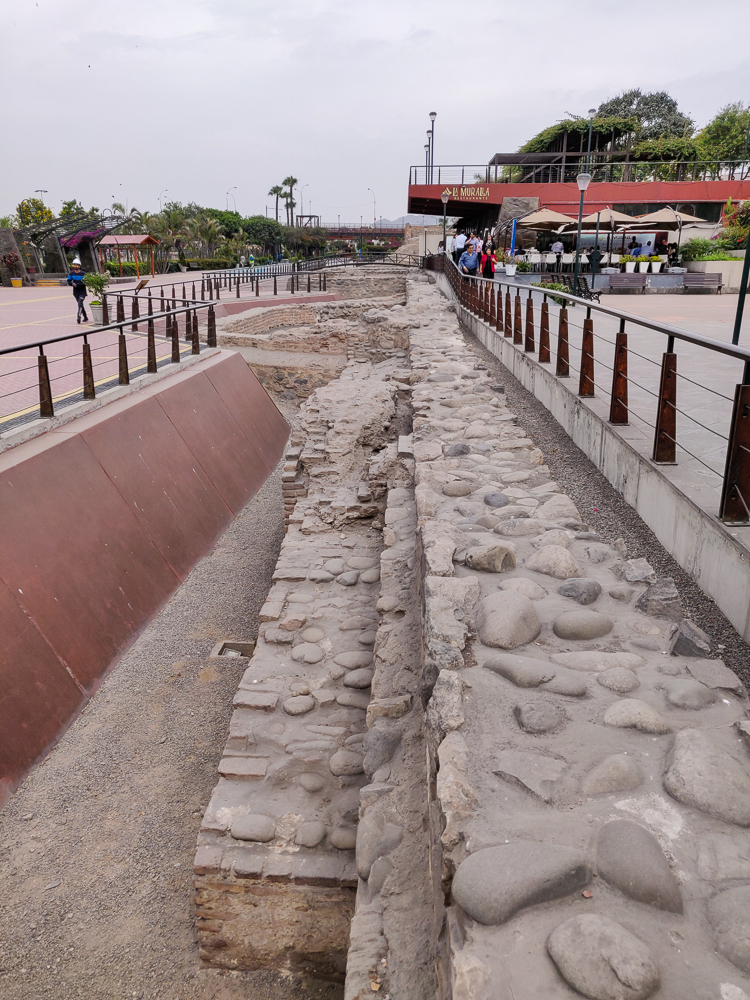
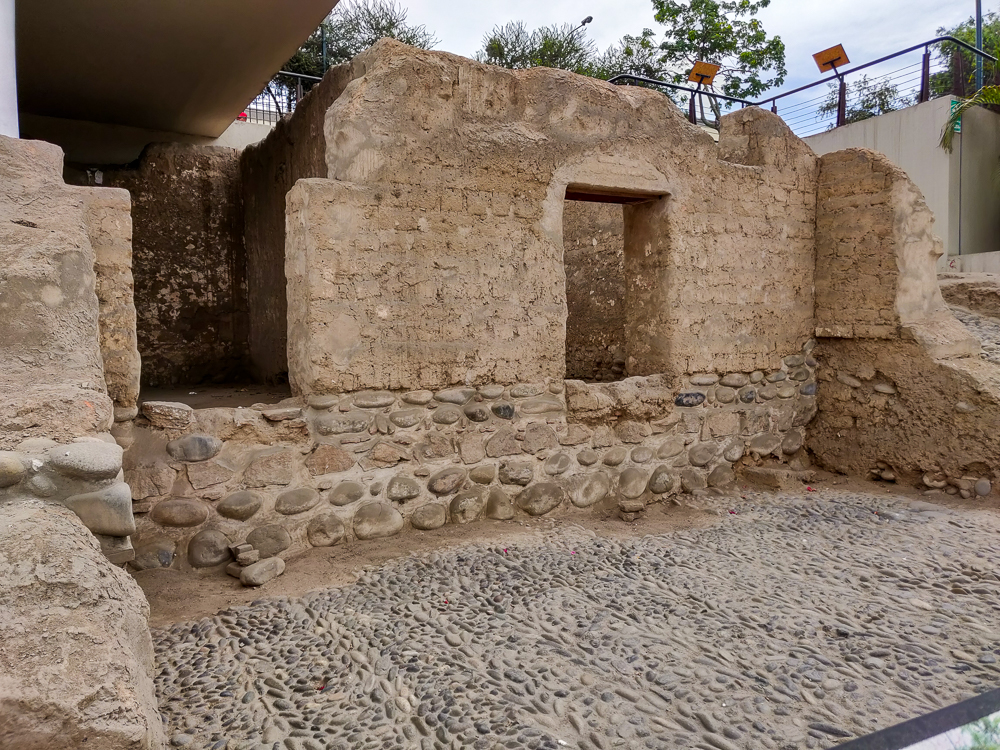

From there, we made the trek back to our hotel in Miraflores. We had a pretty rough time catching a ride back. It took forever for our bus to come, and when one finally did, we had to sardine ourselves into the solid wall of people blocking the door. It should have been physically impossible for us to fit, but Dad said, “Heck no, that bus isn’t leaving without us,” pushed Mom and me until the crowd gave way, and then forced his way in as well. Sometimes, that’s how you’ve gotta do it! We definitely got an authentic public transit experience.
That night, Dina, one of my friends from Esperanza de Ana, and her daughter joined us for my birthday dinner (at Pizza Hut… where else?), and afterward, my parents and I spent some time organizing and packing to get ready for our departures the next day. Mom and Dad were headed back to the States, but I still had another month and a half of traveling ahead! I did my best to sort out what I wanted them to take home vs. what I still needed for my travels and was super thankful that I didn’t have to take EVERYTHING with me. My parents took home a 50-pound suitcase brick (plus some other stuff scattered throughout their suitcases), and I was left with a hiking backpack that still had some extra space. Perfect! (That makes repacking easier because you don’t have to be as precise in order for everything to fit.)
Next time, we’re off to Ecuador!
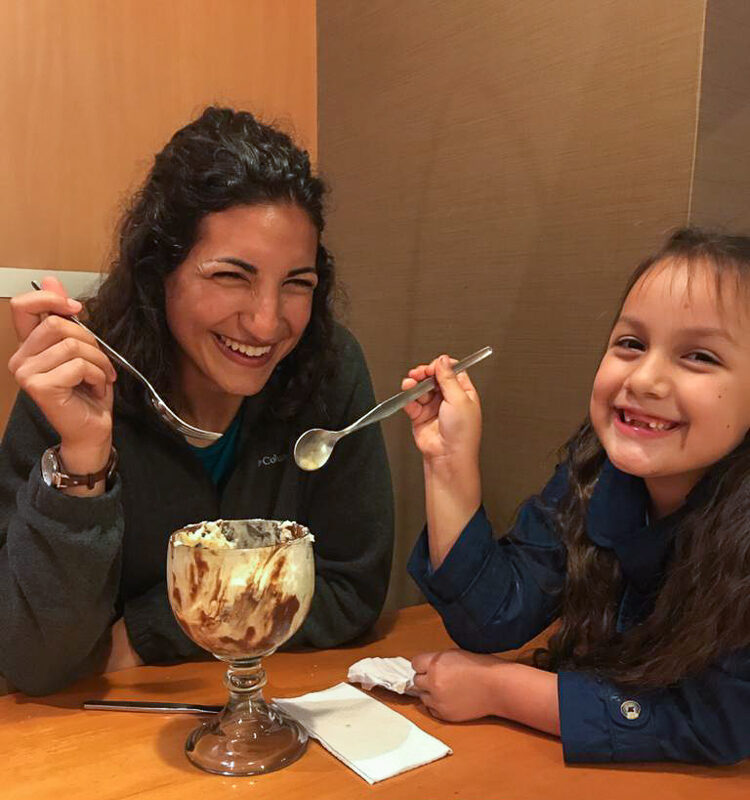
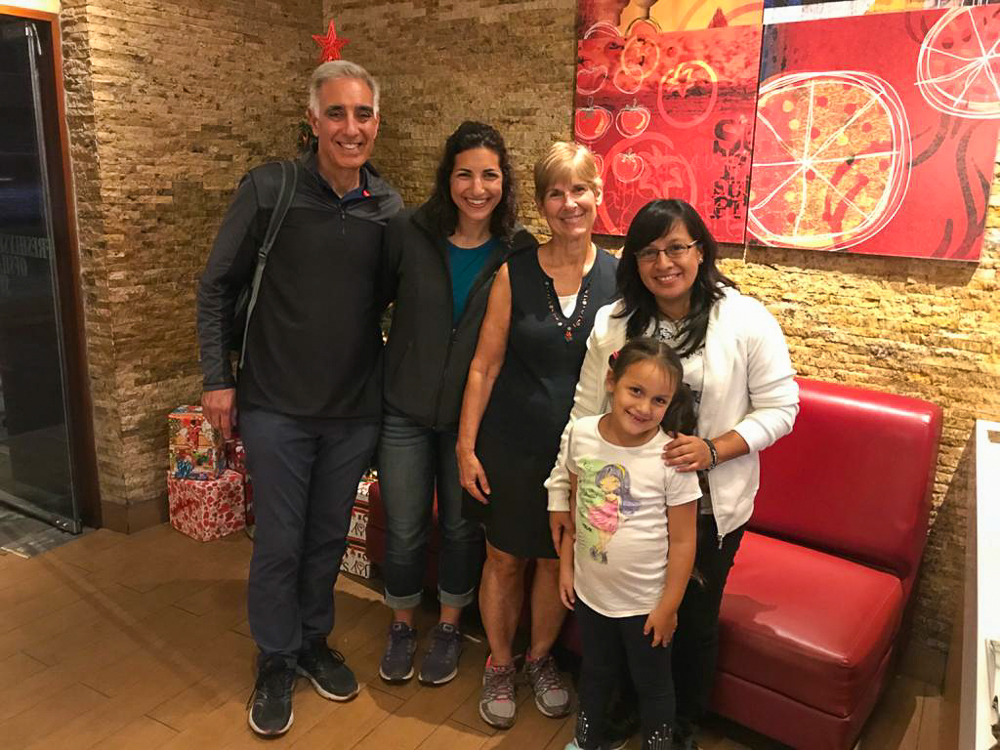
Related Posts
Huaca Pucllana – go back to Lima’s roots with a visit to this 5th-century pyramid
Barranco – walk around Barranco, one of Lima’s trendiest neighborhoods
Buenos Aires – hop across the continent to explore another South American capital city, Buenos Aires, Argentina
Cusco and Qorikancha – compare the desert landscape of Lima to the highlands of Cusco
Ica – embrace the Peruvian desert with a visit to Ica, a city surrounded by sand dunes

